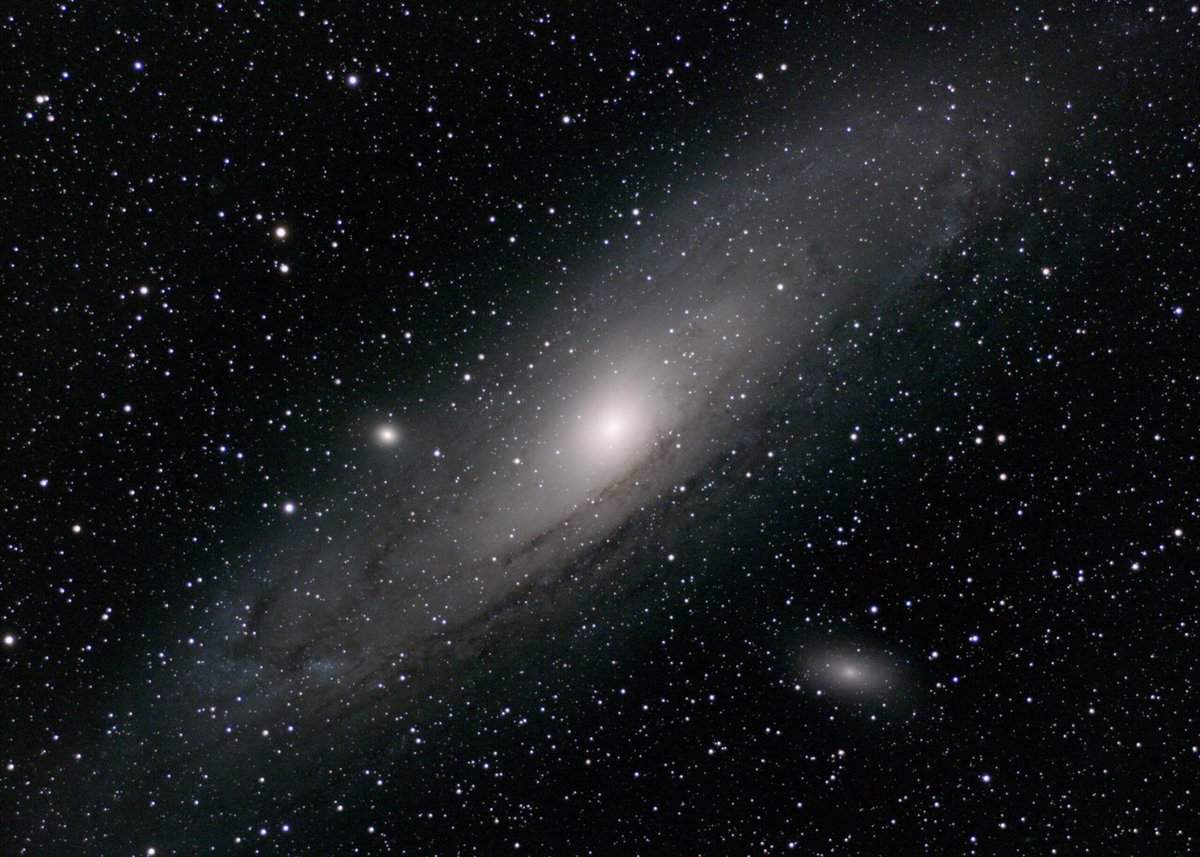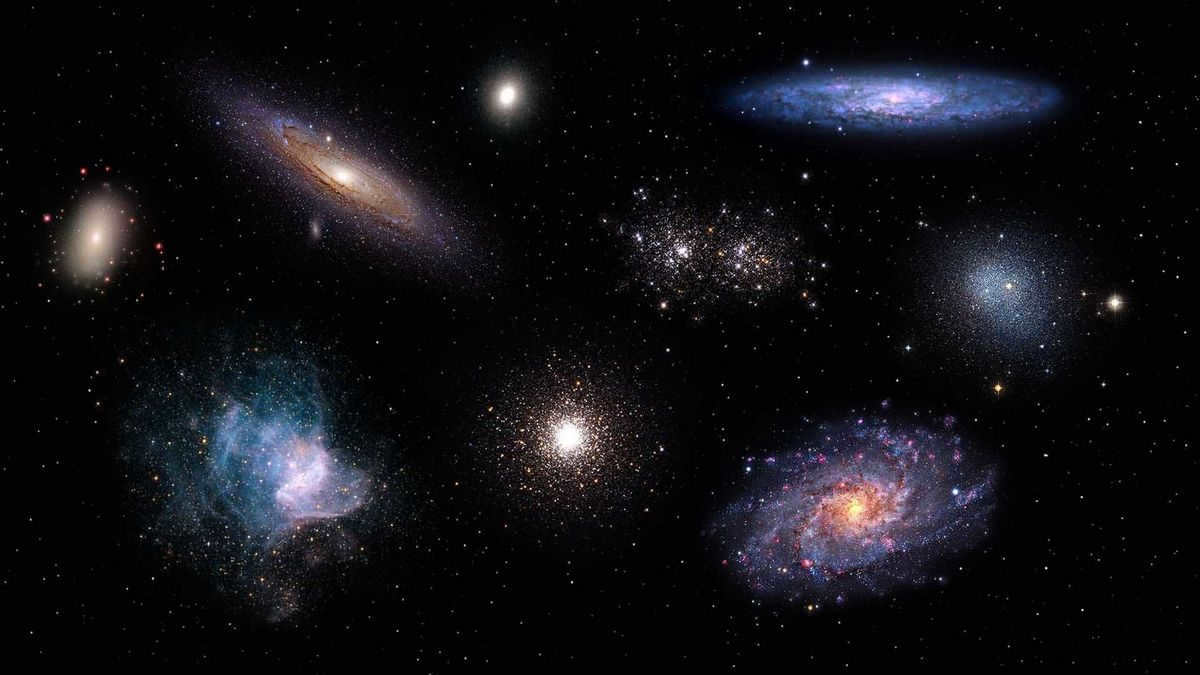
The commencement of a new astronomical season signifies the ideal time to behold novel celestial entities! This article is dedicated to deep-sky objects (DSO), commonly referred to as “dipsky” objects. We will enlighten you about galaxies and star clusters that are observable during the month of October. The selected dates in this article are chosen to ensure that the object is positioned at the highest point in the sky on the day of observation, making it more convenient to observe.
To locate any of the deep space objects mentioned in this article, you can effortlessly utilize our astronomy applications: Sky Tonight and Star Walk 2.
What is the definition of deep space objects?
The term “deep space objects” encompasses faint celestial bodies located outside of our solar system: galaxies, nebulae, and star clusters. This phrase is primarily utilized by amateur astronomers. Numerous catalogs of deep space objects exist, with the Messier catalog and the NGC catalog being the most well-known.
M110 (Oct. 1).
The dwarf elliptical galaxy known as Galaxy M110 (or NGC 205) is set to make an appearance on October 1. As the largest and brightest satellite of the Andromeda Galaxy, M110 is a notable celestial object. During this time, it will have an apparent stellar magnitude of 8.1 and will be located in the constellation Andromeda. Observers with a medium-sized telescope will be able to catch a glimpse of this Northern Sky object. However, it should be noted that M110 is not visible from locations south of 28° south latitude.
Observing the Andromeda Galaxy and M32 on October 2nd
Mark your calendars for October 2nd, as you will have the unique opportunity to witness two captivating galaxies: the renowned Andromeda Galaxy (M31) and its companion, M32. Let’s delve into the intriguing details of these celestial objects.
The Andromeda Galaxy’s presence in the October 2022 sky
Referred to as M31 and NGC 224, the Andromeda Galaxy holds the distinction of being the closest large spiral galaxy to our very own Milky Way. Interestingly, it was initially classified as a nebula, hence the enduring moniker “Andromeda Nebula” in the field of astronomy.
Aspiring astronomers are particularly drawn to the Andromeda Galaxy, given that it is the farthest object visible to the naked eye. On October 2nd, this captivating galaxy will radiate with a stellar magnitude of 3.4 within the constellation Andromeda. To fully appreciate its splendor, we recommend utilizing binoculars or a small telescope.
M32, a satellite of the Andromeda galaxy
On October 2, you will have the opportunity to observe the galaxy M32 (NGC 221). It is the second brightest companion of the Andromeda Galaxy, following the galaxy M110. M32 can be found in close proximity to its parent galaxy. To observe it, you will need a medium-sized telescope as it will have a brightness of 8.1 star magnitude. It is important to note that the Andromeda Galaxy and the M32 galaxy are not visible if you are located south of 28° south latitude.
The M32 galaxy has a rather unique origin story. According to one hypothesis, approximately two billion years ago, the Andromeda galaxy engulfed another large spiral galaxy known as M32r. Scientists believe that M32 is a remnant of this “eaten” galaxy.
October 3: Sculptor Galaxy Shines Brightly
NGC 253, a magnificent spiral galaxy, is renowned by various names such as the “Sculptor Galaxy,” “Silver Coin,” and “Silver Dollar Galaxy.” Standing out among the stars, it is one of the most luminous galaxies in the night sky and can be easily spotted with binoculars, although a telescope is recommended for a more detailed view. On the night of October 3, NGC 253 will attain an impressive apparent stellar magnitude of 7.1 and will be positioned in the constellation Sculptor. This breathtaking galaxy is readily visible from the Southern Hemisphere but unfortunately remains hidden from sight for those residing north of 44° north latitude.
Small Magellanic Cloud (Oct. 4)
The Small Magellanic Cloud, also known as MMO, SMC, or NGC 292, is a small irregular galaxy located near the Milky Way. On October 4th, this celestial object will have a star magnitude of 2.7 in the constellation Tucana. While it is possible to catch a glimpse of the Small Magellanic Cloud without the use of optical instruments, it is recommended to use binoculars or a telescope for better observation. This galaxy is visible from any location in the Southern Hemisphere, but unfortunately cannot be seen from most parts of the Northern Hemisphere.
NGC 362 (October 7)
Our next celestial object of interest is situated in the vicinity of the Small Magellanic Cloud in the night sky, and it is exclusively observable from the Southern Hemisphere. NGC 362 (Caldwell 104) represents a spherical accumulation of stars, a globular star cluster, with an astonishing number of hundreds of thousands of individual stars. On the 7th of October, NGC 362 will attain a stellar magnitude of 6.6 and will be positioned within the constellation Tucana. In order to witness this awe-inspiring phenomenon, the utilization of binoculars or a modest telescope is advised.
Triangle Galaxy (Oct. 15)
The Triangle Galaxy, also referred to as M33 and NGC 598, is the third most extensive galaxy within the Local Group, which encompasses the Milky Way and the Andromeda Galaxy. On October 15, the apparent brightness of the Triangle Galaxy will measure 5.7, making it visible with binoculars. Seek out this galaxy within the Triangle constellation. The Triangle Galaxy is primarily observable in the Northern Hemisphere; observing it in the Southern Hemisphere will prove challenging.
Double cluster (October 26)
The Double Cluster (Caldwell 14) covers an area equivalent to two diameters of the full Moon and consists of two dispersed star clusters. The western half of the Double Cluster is represented by NGC 869 (h Perseus), while the eastern half is represented by NGC 884 (χ Perseus). On October 26, NGC 869, the dispersed cluster, will reach a brightness of 5.3 star magnitude, while NGC 884 will reach 6.1 star magnitude. To observe both halves of the Double Cluster, you can utilize binoculars or a small telescope. Please note that if you are located south of 30º south latitude, you will not be able to view these objects.
Observing the last item on our inventory can be quite challenging. The dwarf spheroidal galaxy located in the Furnace constellation serves as a companion to our own Milky Way galaxy. Within this galaxy, there are six globular star clusters that are actually easier to spot than the galaxy itself. On October 31st, the galaxy is expected to reach a magnitude of 9, meaning you will need a medium-sized telescope at the minimum in order to catch a glimpse of it. If you only have a small telescope, you can still attempt to observe the bright globular clusters within this galaxy. However, it’s worth noting that the dwarf galaxy in the Furnace constellation is primarily visible in the Southern Hemisphere and cannot be observed north of 35° latitude.
Explore the Night Sky with Sky Tonight
Discover the wonders of the universe with the Sky Tonight astronomy application, which offers a vast collection of over 90,000 deep space objects. This app allows you to explore galaxies, nebulae, and star clusters from various catalogs such as Messier, NGC, Caldwell, Collinder, Melotta, IC, PGC, and many others. The best part is that all these captivating deep space objects are completely free to access.
To find a specific object of interest, simply click on the magnifying glass icon, type in the name or symbol of the object in the search box, and then click on the target icon. The app will instantly display the precise location of the object in the sky above you.
We appreciate you taking the time to read our article. If you happen to catch a glimpse of any of these extraordinary objects, don’t hesitate to share your experiences with us on social media. For even more knowledge about deep space objects, don’t miss out on our exciting “Guess the Nebula!” quiz. We hope you have clear skies and successful observations!
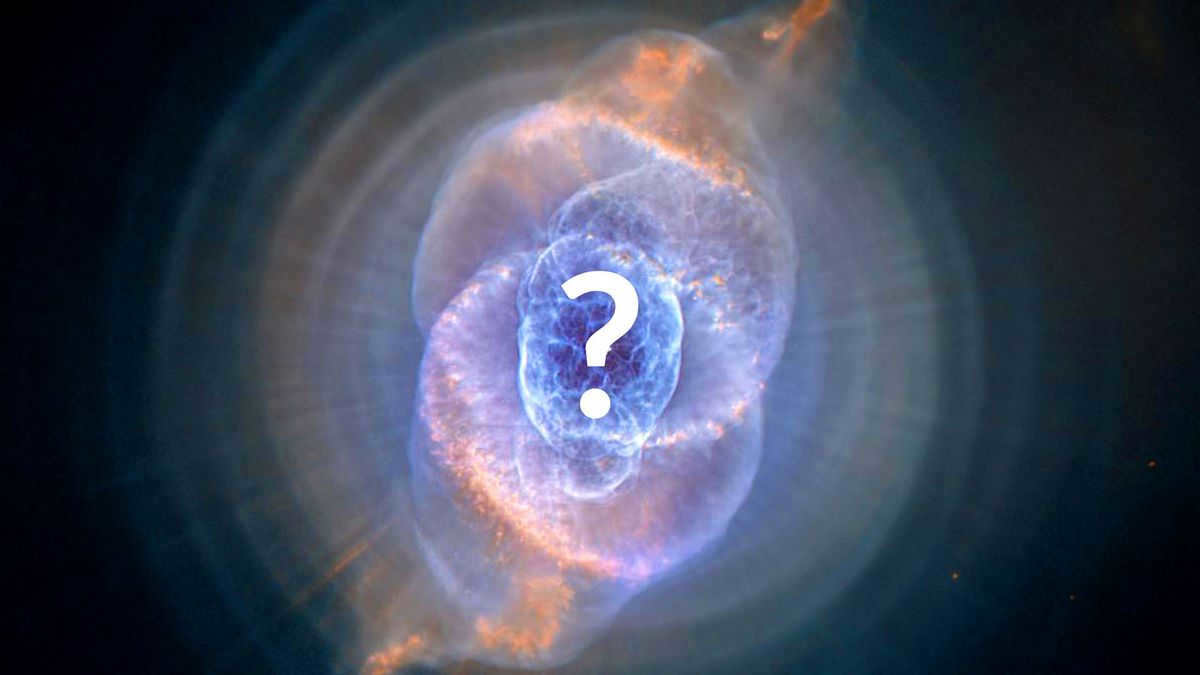

Scientists studying the vastness of space have a peculiar habit of assigning peculiar names to celestial objects. Can you take a shot at identifying these nebulae based solely on their captivating images?
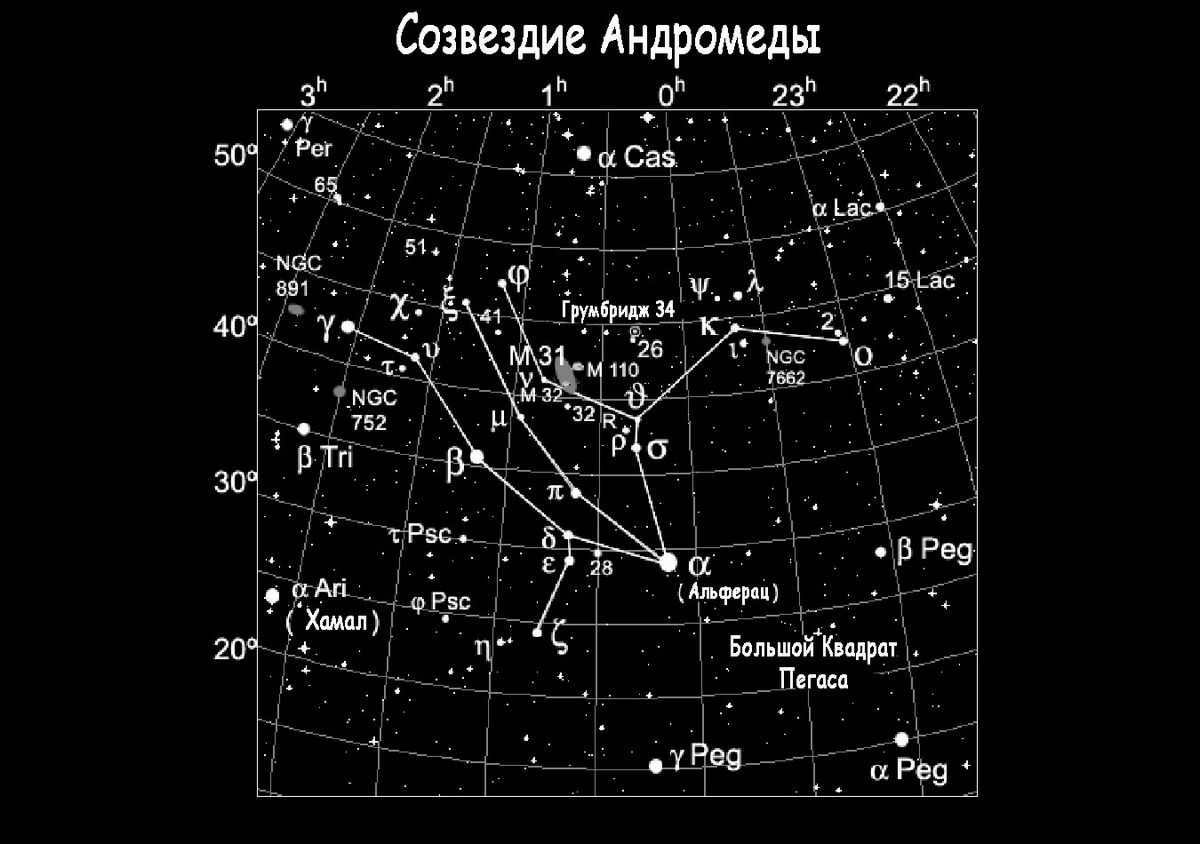
The Andromeda constellation is visible in the northern hemisphere of Earth and consists of three stars with a magnitude of two. It is known for its unique pattern formed by its constituent stars, which stretch in a chain from the northeast to the southwest.
Exploring the celestial realm
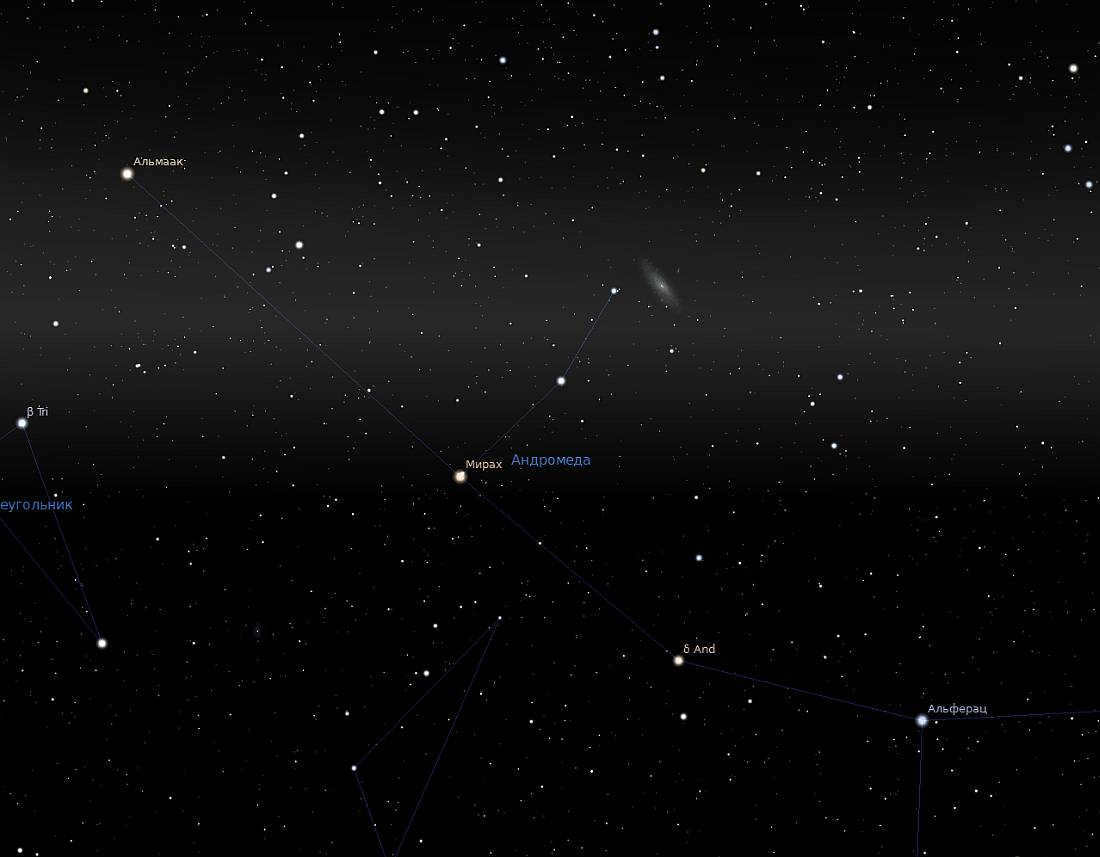
Astronomy enthusiasts in Russia have a great opportunity to observe the prominent Andromeda constellation. This constellation is easily visible throughout the country, thanks to its high position in the night sky. The best time to observe Andromeda is during the months of October and November, although September is also a good starting point.
Locating the Andromeda constellation is not a daunting task. To begin, one should look for the Great Square of Pegasus. In the northeastern corner of this square lies a star named Alferats, which marks the starting point of Andromeda. Spanning approximately 722 square degrees in the sky, this constellation is truly captivating.
Discover the location of M31 within the Andromeda constellation
Fascinating items
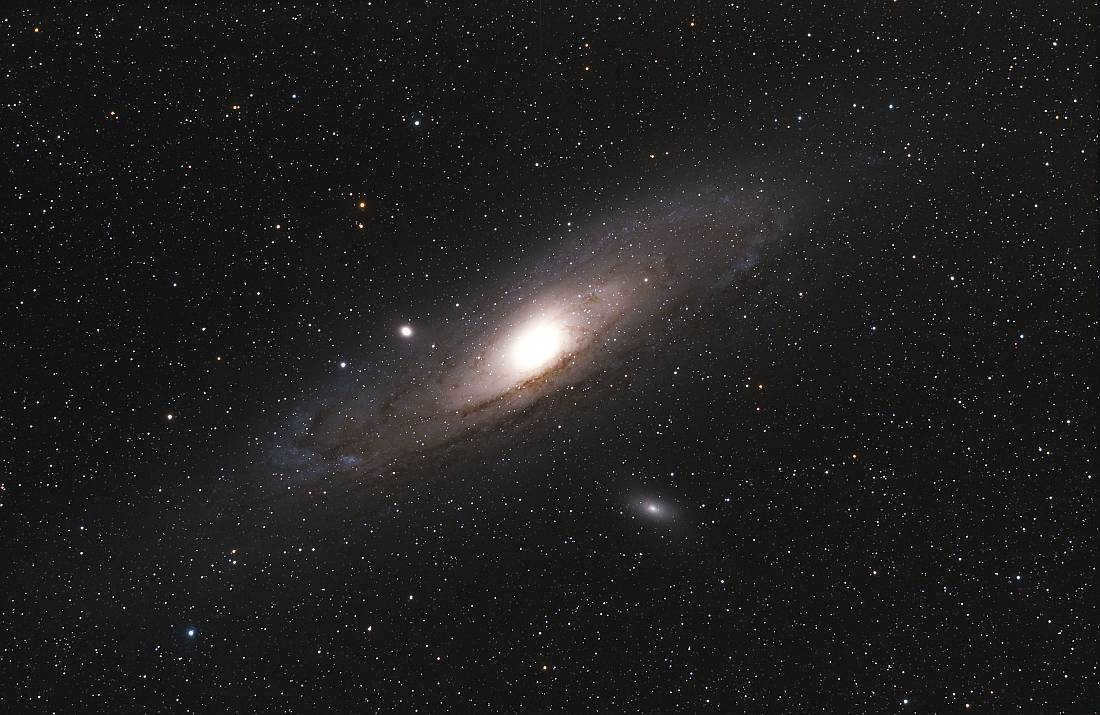
During a moonless, cloudless night, one can observe approximately 160 stars in the constellation with the naked eye. These celestial bodies possess a brightness of up to 6.5 star magnitudes.
A comprehensive look at the Andromeda Nebula galaxy, also known as M31
Amongst all the entities within the constellation, the most notable one is the spiral galaxy Andromeda Nebula, or M31.
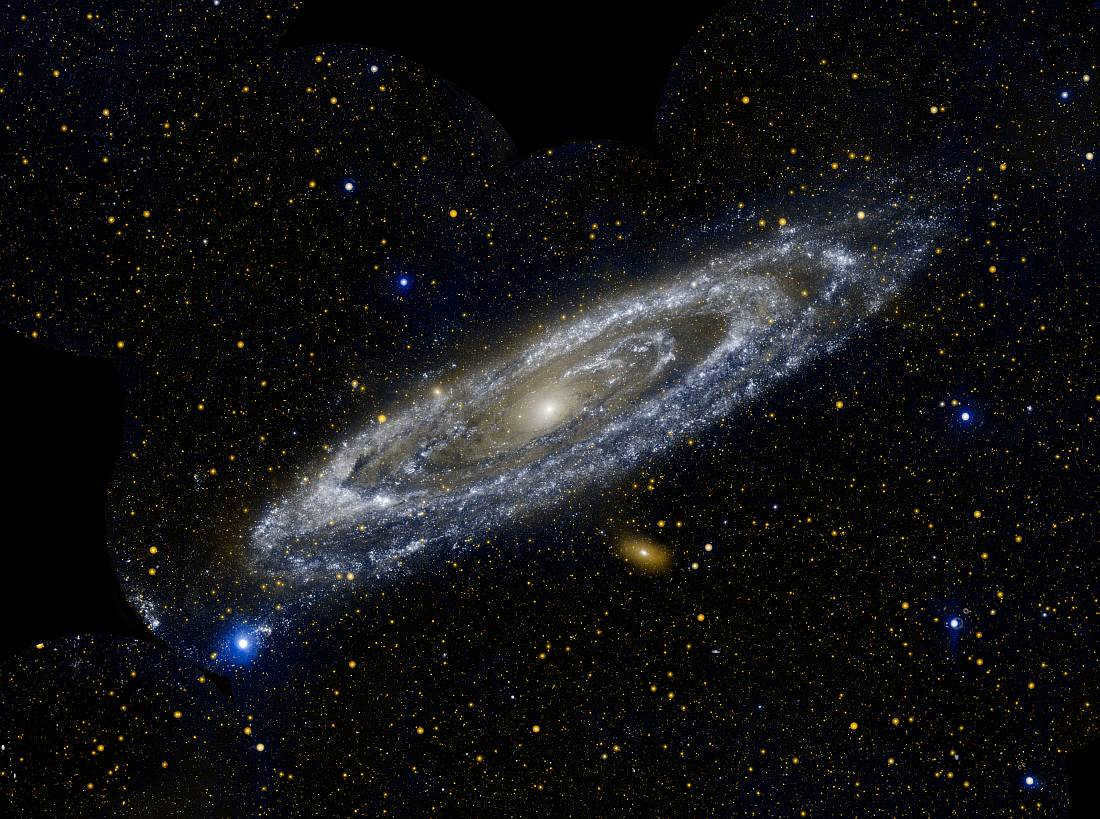
Unique photo of the Andromeda Galaxy or M31 captured in the ultraviolet range
The M31 galaxy was first observed by astronomers in the 10th century, but its true nature was not fully understood until the 19th century when more advanced telescopes were developed. The Andromeda Galaxy is home to a wide variety of celestial objects, including variable stars, star clusters, planetary nebulae, dwarf galaxies, and other fascinating phenomena.
Witness the mesmerizing view of M31 through a telescope
Celestial Bodies
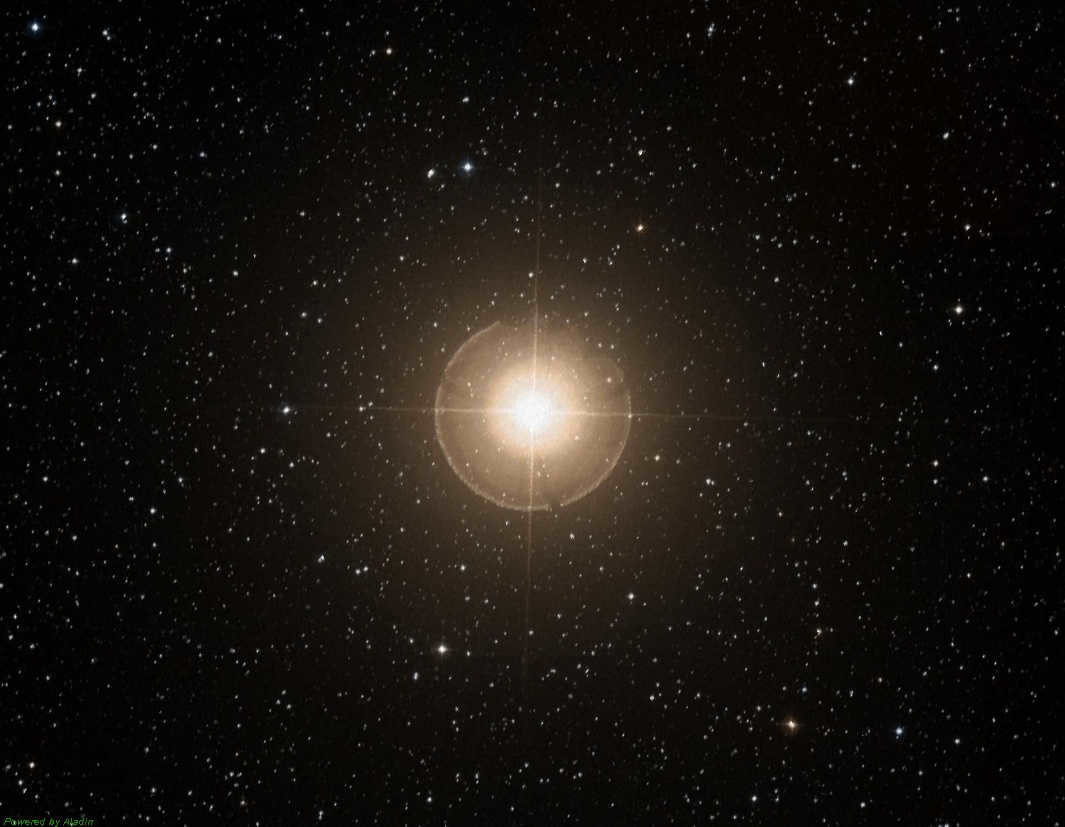
Andromeda Gamma or Almack is captured in this photo.
This system is composed of three celestial bodies. The primary one is a brilliant yellow star, shining with the intensity of a second magnitude. Orbiting around it are two blue stars that are physically linked.
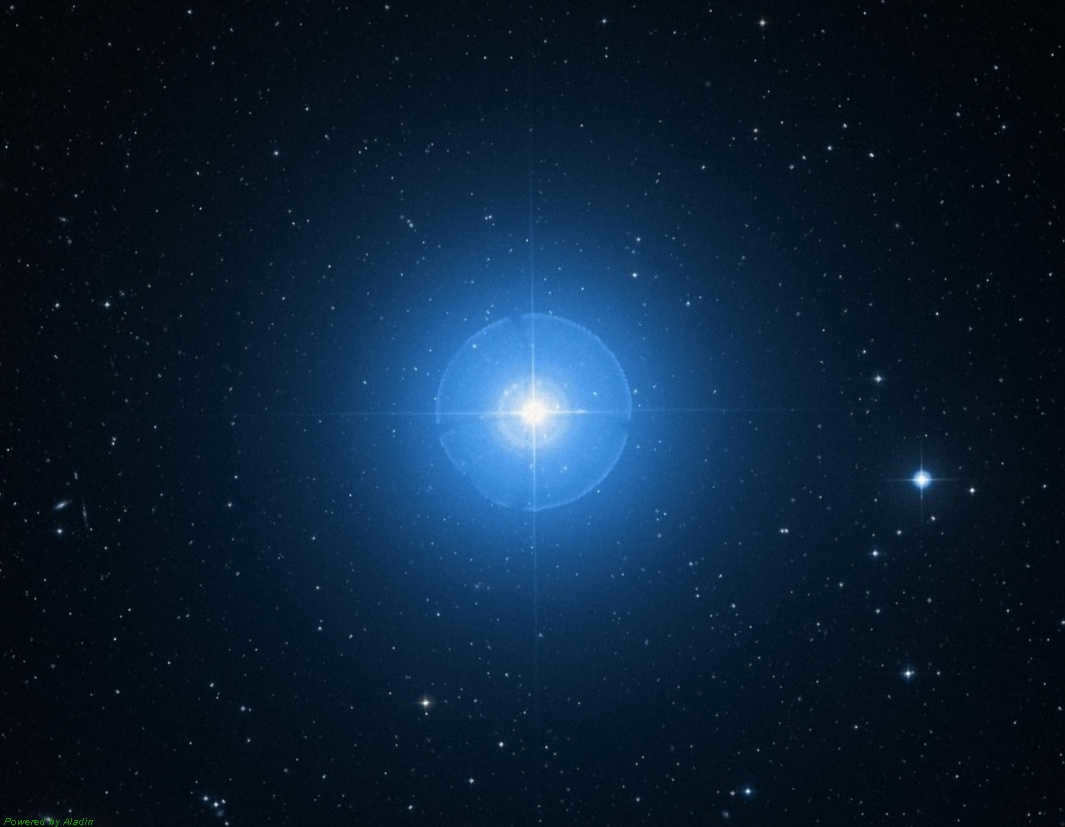
Alferac is a star with a luminosity of 2.1 magnitudes. It is classified as a navigational star, similar to Almak. Ancient sailors used these stars to navigate and find their way back home.
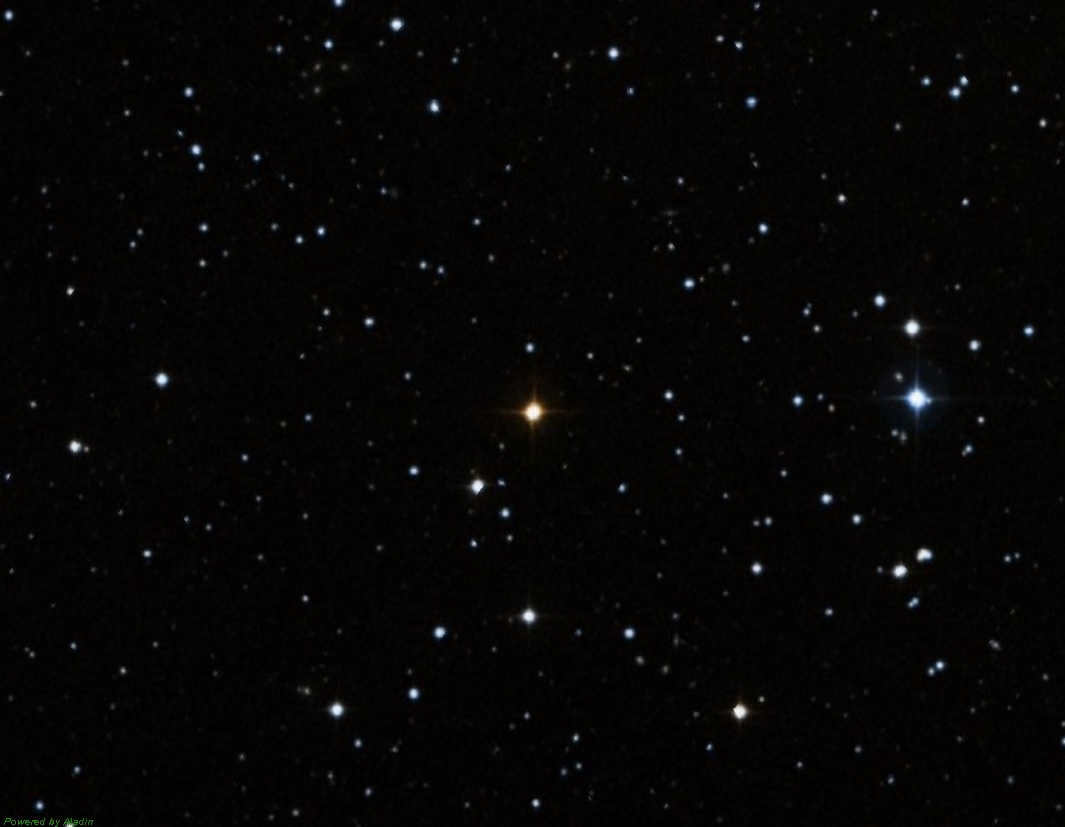
R Andromeda is a star that exhibits variability. It undergoes changes in brightness with a range of nine stellar magnitudes.
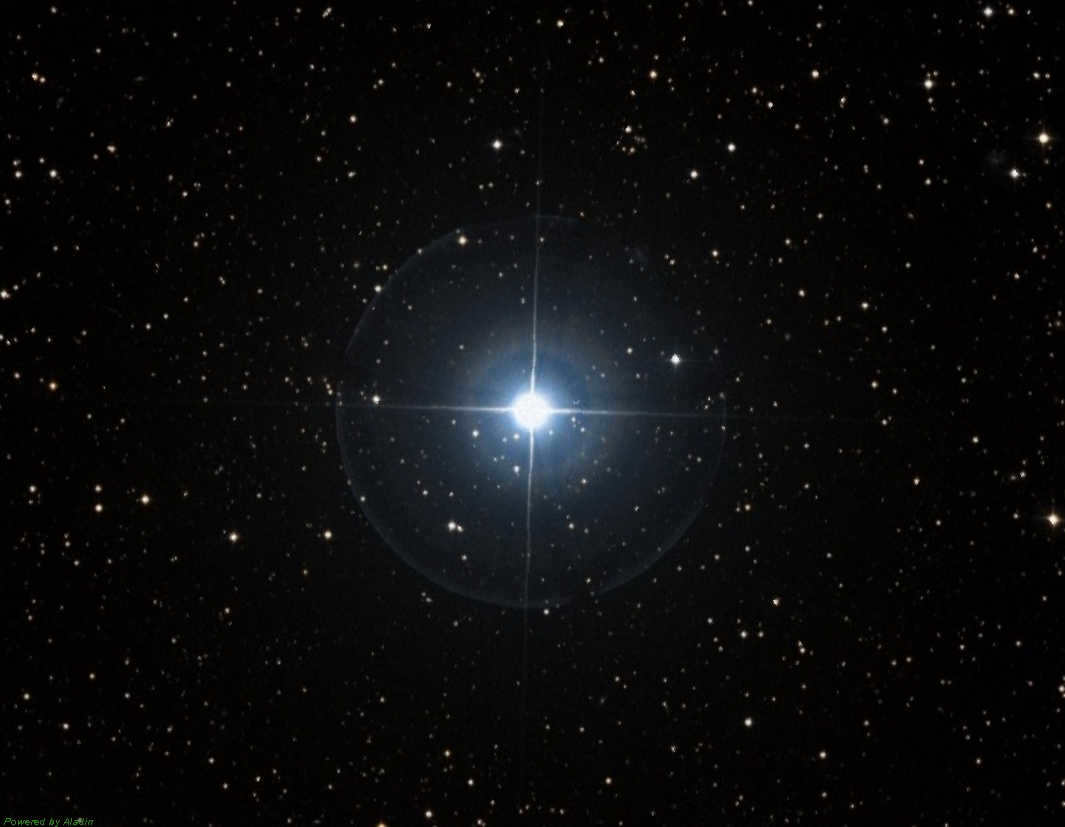
υ Andromeda is a star located in the main sequence that astronomers have recently discovered to possess a planetary system. Among the planets in this system, one of them, called planet b, resembles Jupiter in its characteristics, while the other two are known for their eccentricity, making them giants in their own right.
Galaxies
The Andromeda Nebula is widely recognized as one of the most prominent galaxies in the universe. Its existence was first documented by a Persian astronomer during the 10th century. Notably, this galaxy also has two satellite galaxies, M32 and NGC 205, which orbit around it.
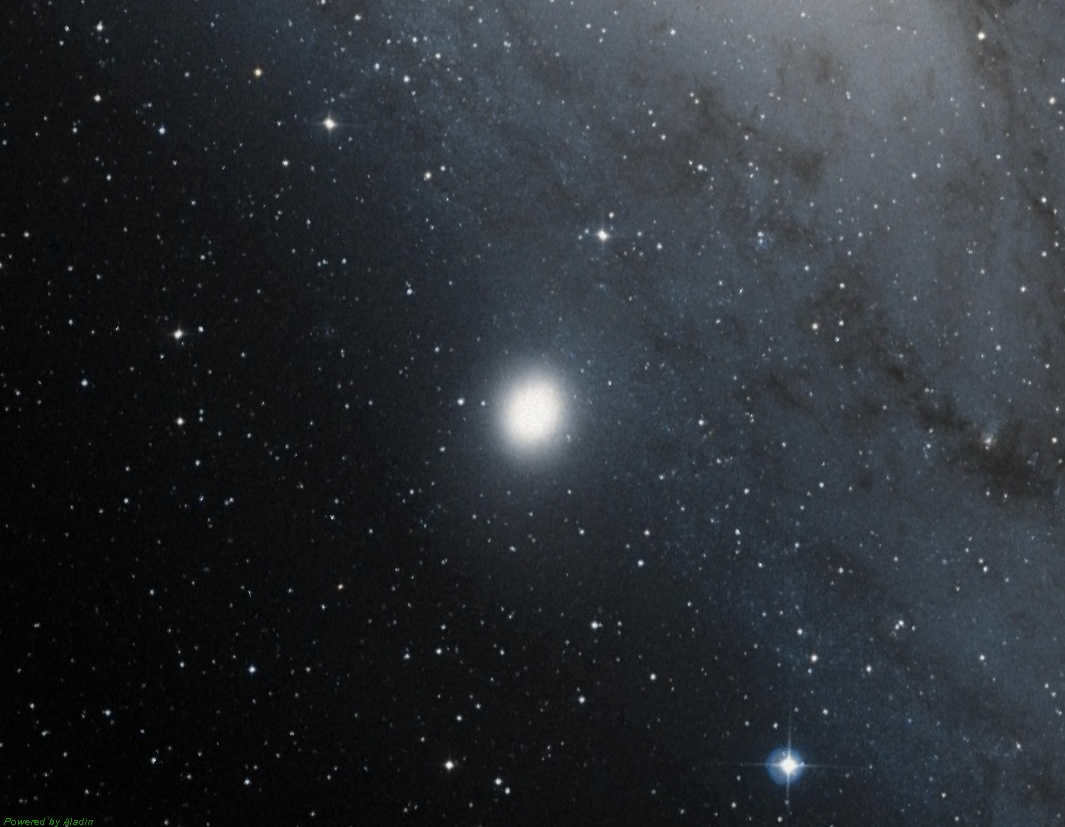
Image of M32, a dwarf elliptical galaxy, which is a satellite of the Andromeda galaxy
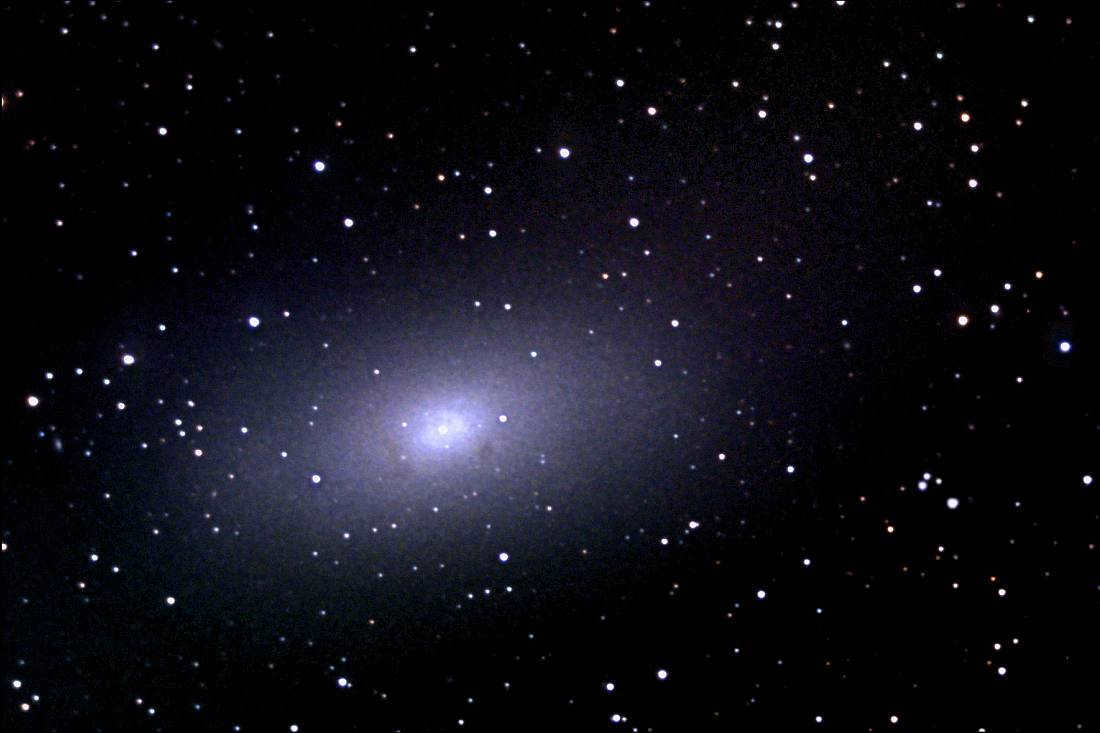
Photograph of the NGC224 satellite located in the vicinity of the Andromeda Galaxy
The celestial object is easily visible to the naked eye on a night without the presence of the moon. It has a diameter of approximately 220 thousand light years and is home to over 300 billion stars. This neighboring spiral galaxy is located at a distance of 2.2 million light years from our own galaxy. The nebula itself contains numerous globular clusters, with observations of galaxies systematically starting with M32. Notably, the renowned Hubble telescope played a significant role in these observations.
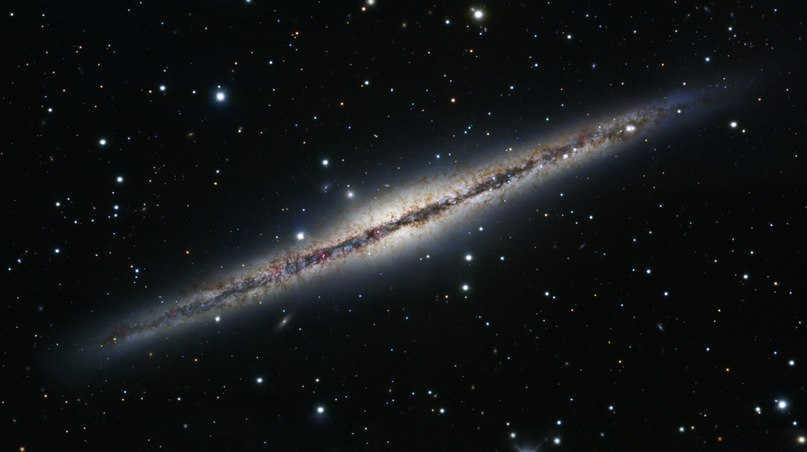
The galaxy NGC 891 is truly remarkable. Situated in close proximity to us, it presents a ribbed appearance and captivates with its breathtaking beauty.
Observe NGC 891 through a telescope
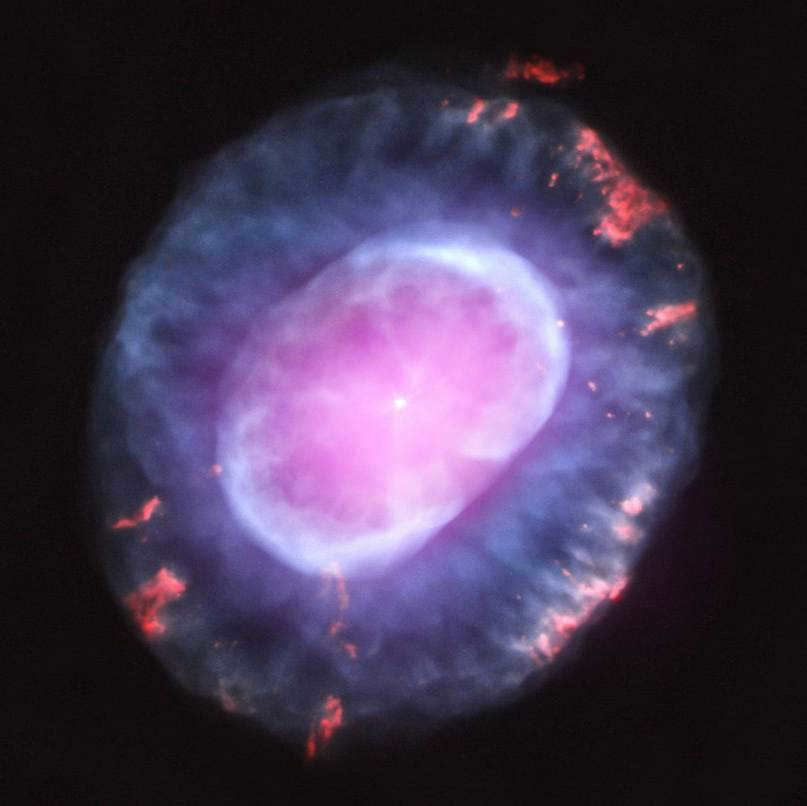
Image of the planetary nebula NGC 7662
Aside from galaxies, there exists a celestial body known as the NGC 7662 planetary nebula and a star accompanied by an exoplanet named WASP-1.
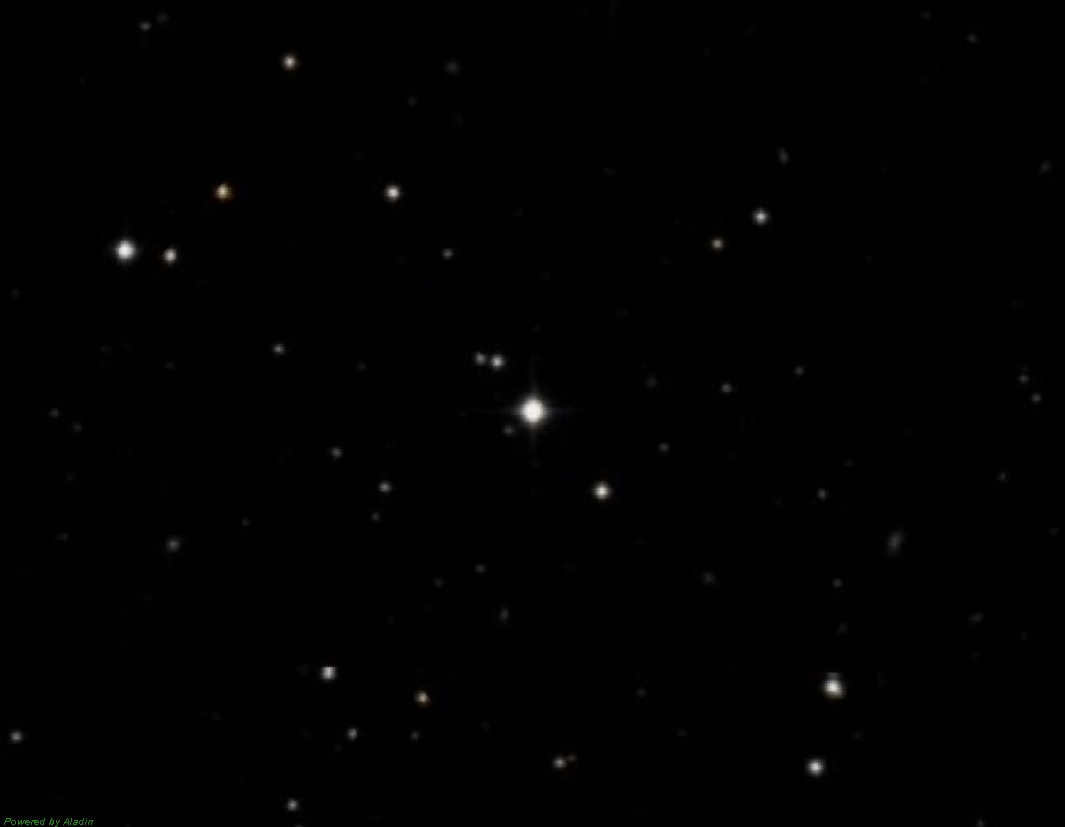
Star WASP-1 possesses a planet beyond our solar system.
The collision of the Milky Way and M31.
Currently, the two largest galaxies within the local cluster are our Milky Way and M31. Our galaxies are moving towards each other, and in a few billion years, they will merge into a single massive galaxy. This event will be a magnificent display of cosmic proportions. Scientists have even simulated the appearance of this merger.
The Origin of the Past
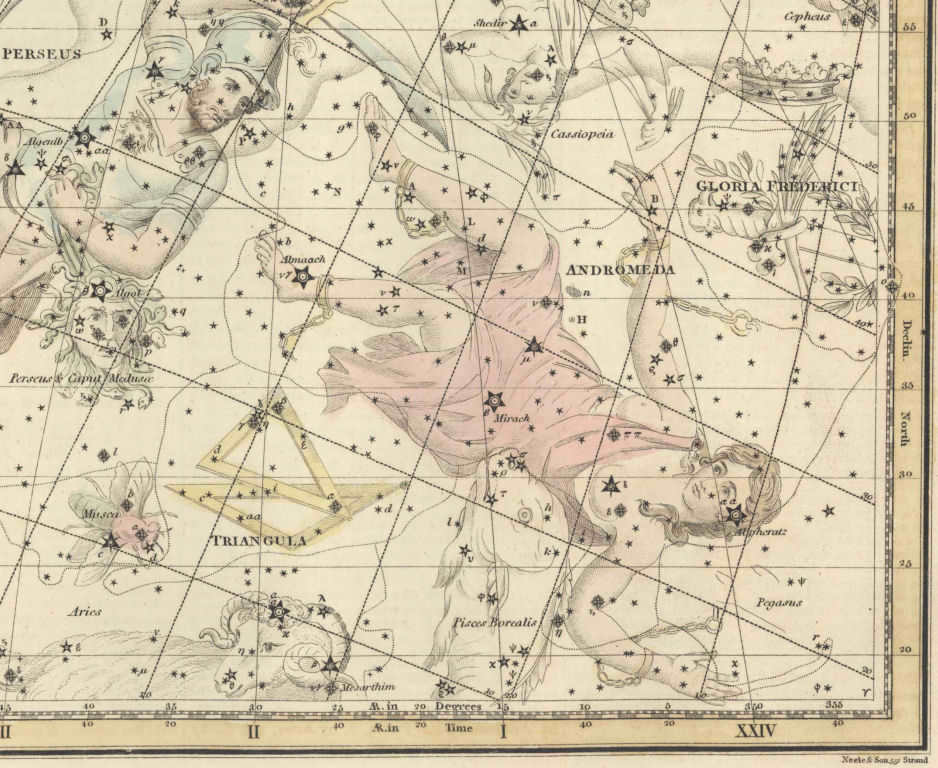
An ancient sky atlas depicts the constellation Andromeda.
Andromeda is one of the constellations included in the Almagest and is considered the oldest. According to Greek mythology, Andromeda was a beautiful princess who was destined to be sacrificed to a sea monster by her father, King Cepheus. However, she was saved by the hero Perseus, and after her death, the gods immortalized her by placing her among the stars in the night sky.
For centuries, humans have connected our Milky Way galaxy with the Universe as they gazed upon the immense expanse of space. However, it was not until advancements in technology and scientific knowledge that we truly grasped the immense scale of the Universe beyond our own galaxy. It was only when we were able to peer deep into the cosmos that we discovered the countless other galaxies, numbering in the hundreds of thousands, that exist alongside our own Milky Way.
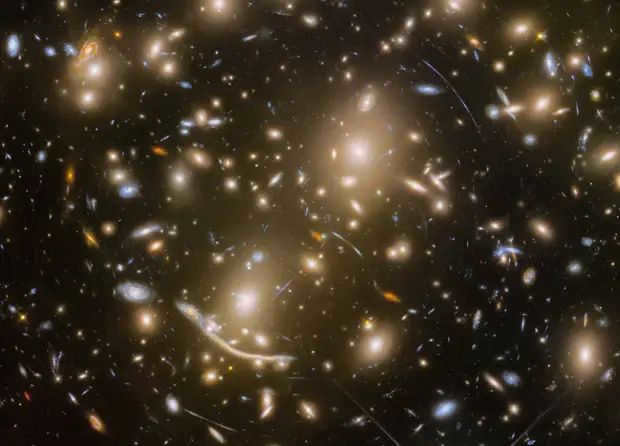
The Andromeda galaxy has been the steadfast companion of the Milky Way since the dawn of the universe. Initially mistaken for the Andromeda Nebula, it was eventually revealed to be a colossal collection of stars, surpassing our own galaxy in size multiple times.
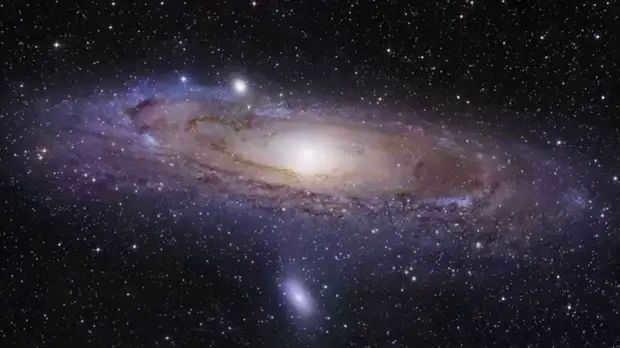
Discovery of the Andromeda Galaxy
Ancient astronomers from the East observed fixed stars in the night sky and recognized them as a distinct class. However, it wasn’t until the invention of optical telescopes that astronomers were able to study these cosmic objects in more detail. The first scientific descriptions of distant objects, initially identified as nebulae, began to emerge. Among them was a cluster of stars located in the Andromeda constellation.
In 1631, the German astronomer Simon Marius provided the initial comprehensive account of Andromeda. Regrettably, Marius misclassified this celestial object, mistakenly identifying it as a far-off solitary star. Subsequently, this enigmatic entity, along with numerous other perplexing phenomena, found its place in Charles Messier’s renowned catalogue. Within this compendium, all unfamiliar nebulae and star clusters were assigned unique designations. Consequently, the Andromeda galaxy was bestowed with the appellation M31.
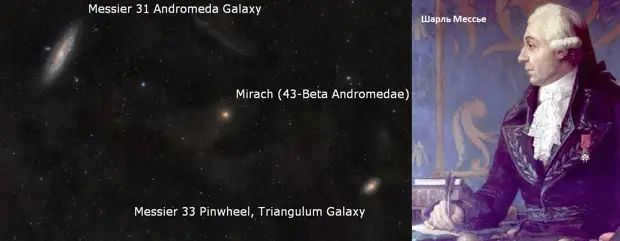
Further investigation of the celestial body known as M31 was conducted by the English astronomer William Herschel, who identified it as the nearest nebula to Earth. Herschel even attempted to calculate its approximate distance, but these calculations were later found to be inaccurate. It was not until the 19th century that scientists were able to initiate a comprehensive study and research on this enigmatic object. It was revealed that the mysterious entity M31 is situated within the Andromeda constellation, which can be observed in the first quadrant of the Northern Hemisphere. Presently, if one were to observe the Andromeda galaxy, the star Mirach in the Andromeda constellation serves as a useful point of reference.
By the second half of the 19th century, it became evident that the object we were observing was not a nebula composed of gas and dust. The initial spectral data from M31 suggested that it was, in fact, a massive cluster of stars located far away from us. Subsequent investigations confirmed that it was indeed a stellar entity. In 1885, the discovery of unexplored stars in the Universe was further highlighted by the appearance of a brilliant supernova. This event provided an opportunity to capture the first photographs of M31, which was previously believed to be part of our own Milky Way galaxy. The images clearly depicted the object’s spiral structure, leading to the mistaken assumption that it was a distant star system.
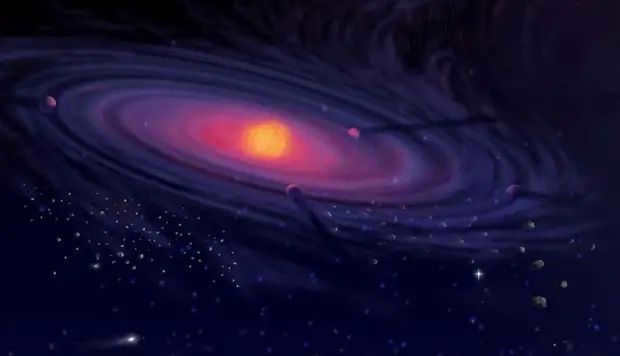
In the future, astronomers conducted research from Earth and observed planets orbiting around a hypothetical center. However, this hypothesis was quickly debunked. American astrophysicist Edwin Hubble made significant contributions to the study of the Andromeda Nebula. According to his observations, the nebula was located at a distance too great for it to be within the boundaries of our Milky Way galaxy. As a result, Hubble proposed the theory that we were actually dealing with a separate galaxy.
Confirmation of his theory came from the observed velocity of the object M31, which was calculated in 1912 by another American scientist named Vesto Slifer. It was discovered that a group of stars in the Andromeda constellation was moving towards us at an astonishing speed of 300 kilometers per second. This information directly contradicted the stable positions of other celestial objects in our galaxy. With this knowledge in hand, Edwin Hubble proposed a classification system for all nebulae visible from Earth, distinguishing between galactic and extragalactic objects. The Andromeda Galaxy, a star system that closely resembles our own Milky Way, was subsequently categorized as an extragalactic object.
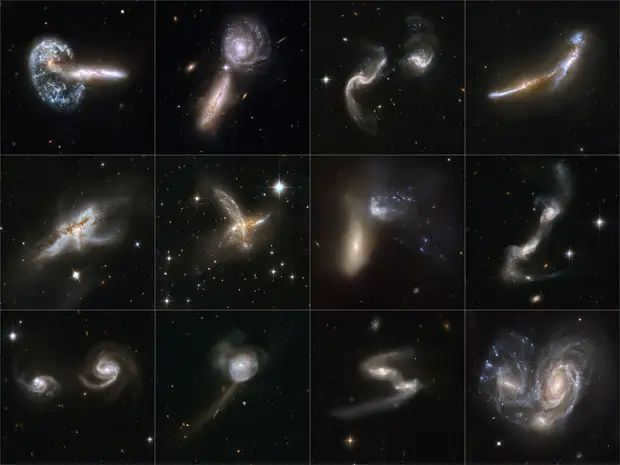
Ever since that time, the name Andromeda Nebula has become a thing of the past, and a fresh galaxy has emerged, which happens to be the nearest extragalactic entity to us.
Description of the Andromeda Galaxy
During the late 19th and early 20th centuries, scientists were intrigued by the identity of our neighboring galaxy. Presently, the Andromeda Galaxy is the most extensively examined and frequently observed extragalactic entity in the universe. The vast amount of data gathered from numerous years of astronomical observations of stars within the Andromeda Galaxy has enabled the scientific community to explore the nature of the cosmos beyond the Milky Way. Additionally, the close proximity and behavior of this alternate galaxy offer insights into the processes occurring on a universal scale.

All previous visual and fictional depictions of our Milky Way galaxy have been based on the hypothetical perspective of observations from the Andromeda galaxy. In contrast, scientists have long considered the neighboring galaxy to be a reflection of our own starry island. However, recent advances in astrophysics have provided more detailed images of Andromeda, revealing that it is actually much larger than the Milky Way and has a significantly different structure.
Today, we have gained the following knowledge about the Andromeda galaxy:
- It is classified as an Sb galaxy;
- It belongs to the Local Group;
- The object is classified as one of the extragalactic entities that exhibit a blue shift.
- It is currently moving towards the Milky Way galaxy at a speed of 140 kilometers per second.
- Estimates suggest that the galaxy contains approximately a trillion stars.
- With a diameter of 250,000 light-years, the galaxy is four times larger than the Milky Way galaxy.
- There are four dwarf satellite galaxies that have been identified: M32, M110, NGC185, and NGC.
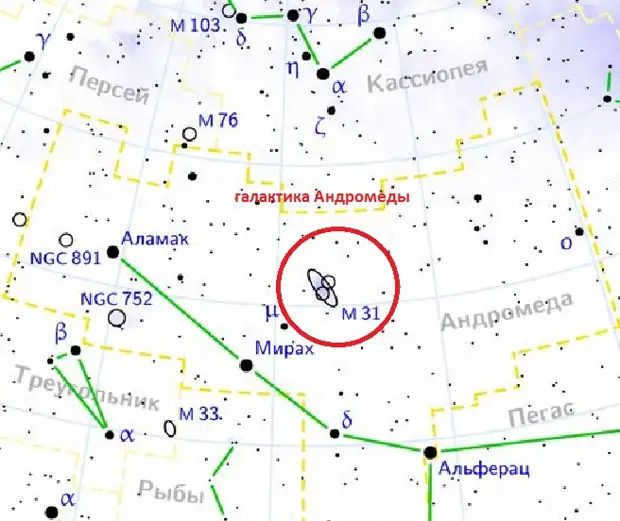
Upon initial examination, the characteristics mentioned appear to be similar to the available data regarding our own galaxy. What is particularly concerning is the rapid pace at which our neighboring galaxy is approaching our stellar cluster. It is believed that in approximately 5 billion years, the Milky Way will be engulfed by the Andromeda galaxy, resulting in the formation of a new extragalactic entity.
The structure of Andromeda, unlike its neighbor the Milky Way, is a typical spiral galaxy with evenly distributed arms around the galactic center, known as the bulge. In the case of Andromeda, the central region, composed of ancient stars, is not classified as a junction like the Milky Way. This is the main distinction between these neighboring star systems. However, recent infrared imaging suggests that the center of Andromeda may also have a junction, although it is currently obscured by a cloud of gas and dust when observed with optical instruments.
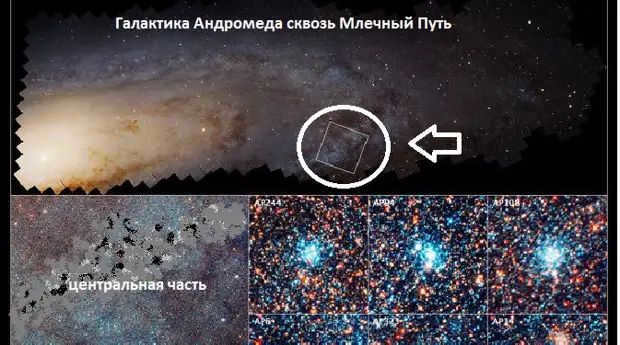
Contrary to the Milky Way’s arms, the spiral arms of the Andromeda Galaxy are more widely separated. Several of these arms display a distorted and irregular form. The arms also feature numerous dark spots, resulting from collisions between the cosmic behemoth and dwarf galaxies that occasionally traverse its path.
The primary attributes of the Andromeda galaxy
The Andromeda galaxy differs slightly in concentration of gas, dust, and stellar disk compared to our own galaxy. As a result, the scale of our neighboring galaxy is also distinct, making it a vast extragalactic formation in terms of linear dimensions and the number of stars. While there are other large extragalactic objects called megalaxies, which contain 100 trillion or more stars, the Andromeda galaxy is by no means a small extragalactic object in comparison.
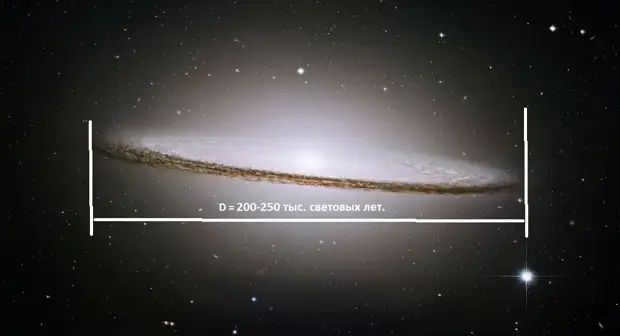
The Milky Way is estimated to contain around 400 billion stars, although this figure could be higher due to the abundance of gas and dust clouds which are much more concentrated in our galaxy compared to its counterparts. In simpler terms, our galaxy is not as clear and transparent as other objects outside of it.
When it comes to mass, the two galaxies are approximately equal, with each having a mass of about 1-1.5 trillion times that of our Sun. This equality is due to the presence of a similar amount of dark matter in both galaxies. The mass of a galaxy is determined by comparing the masses of visible objects in space and the amount of cosmic gas present. However, it is not possible to determine the exact size and mass of the neighboring galaxy. Such calculations can only be made using the gravitational laws that govern the Universe, but this would take thousands of years, a time frame that no generation of humans has. Considering that observations of the Andromeda galaxy have only been made for a little over 150 years, the available data for precise measurements is clearly insufficient.
Notwithstanding this, scientists form conjectures, wherein they calculate the movement of our adjacent galaxy and ascertain the characteristics of its conduct. The Andromeda Galaxy is in a perpetual state of motion, with its constituents traversing space at varying velocities. In proximity to the core, celestial entities orbit the nucleus at a rate of 225 km/s, while at the outskirts, the speed of both celestial bodies and gas decreases by a factor of four to 40-50 km/s.
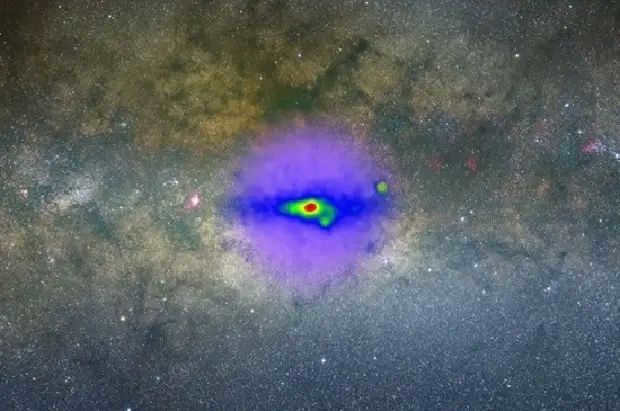
The immense stars situated in the core of the galaxy and the supermassive black hole are responsible for the formation of this impressive stellar spectacle, a characteristic shared by all spiral galaxies. Initial estimates suggest that the mass of this supermassive black hole is approximately 140 million times that of our Sun. Surrounding the central black hole of the Andromeda galaxy is a ring of vibrant blue stars. Much like the planets in our solar system, these stars revolve around the galaxy’s center. Furthermore, scientists have recently discovered the presence of an additional 35 black holes within the stellar disk of the Andromeda galaxy, which undoubtedly play a role in influencing its behavior.
In the center of Andromeda, there are various intriguing cosmic objects. In 1993, scientists were able to detect a dual star cluster in the core. The behavior of this cluster indicates that these formations will eventually merge into one entity in the near future, specifically within the next 100,000 years. Additionally, numerous X-ray sources, believed to be white dwarfs, have been discovered in the central region. Furthermore, there is a collection of neutron stars revolving around the nucleus of the M31 galaxy. When combined, all of these findings suggest that the central area of the Andromeda Galaxy is a complex assortment of scientific marvels that have yet to be fully understood by researchers.
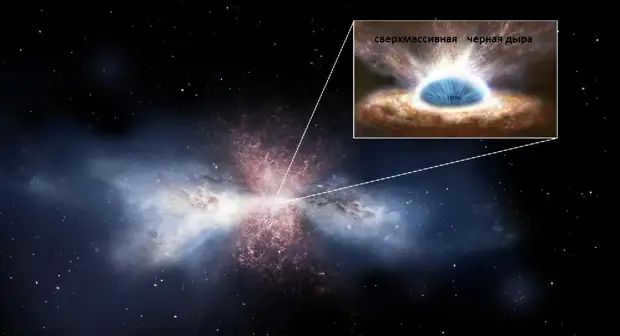
The Andromeda galaxy’s movement in the Universe is accompanied by 14 dwarf galaxies, which serve as its satellites. Previously, only 4 dwarf galaxies were known to be associated with Andromeda. However, recent observations have revealed that their number has increased almost fourfold. The exact number of dwarf galaxies that have interacted with Andromeda since its formation remains unknown. Based on Andromeda’s behavior, it appears that our neighboring galaxy has a voracious appetite and regularly consumes its dwarf companions.
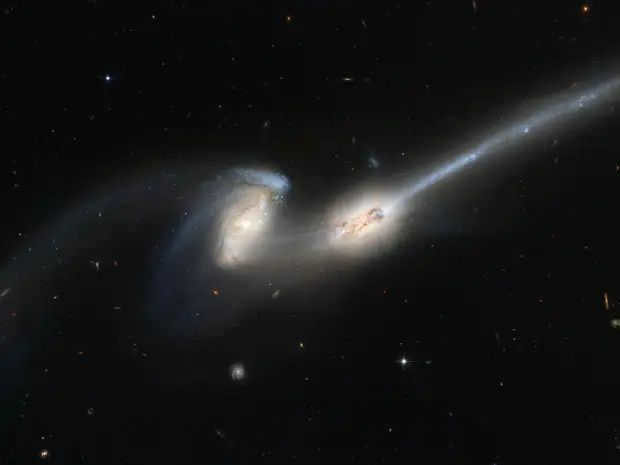
Answers to numerous inquiries may not be discovered in the near future, but currently we possess a concept that the entire Universe is an immense and colossal mechanism. The Andromeda Galaxy, just like our very own Milky Way, exists in accordance with the same principles. This implies that within the vast and limitless expanse of space, there might exist a world akin to ours, which could be considerably distant or, conversely, situated nearby in a neighboring galaxy.
Whether or not human civilization will endure until this juncture remains uncertain. Based on calculations, both neighboring galaxies are set to collide within 3-4 billion years. By that point, the Sun will loom in the sky as a massive red orb, transitioning into a Red Giant. It is probable that life on planet Earth will have vanished by then, but it is conceivable that spaceships will have already acquired the capability to travel great distances, conducting research and exploration of neighboring galaxies.
Did you enjoy reading the article? Make sure to subscribe to the channel to stay updated with the most fascinating content.
Last week, both of us were looking up at the sky in search of the Andromeda constellation (hopefully, we were successful). Now, let’s attempt to locate what beginner amateur astronomers are primarily interested in within this constellation – the Andromeda Nebula. The Andromeda Nebula. So, how can we spot the Andromeda Nebula in the night sky?
What is our objective?
Before we begin our search, it is important to clarify that the Andromeda Nebula is not a nebula in the traditional sense. It is not a cloud of interstellar gas like the Orion Nebula. Rather, it is a colossal galaxy, even larger than our own Milky Way. Recent estimates suggest that the Andromeda Nebula is home to approximately 1,000 billion stars, with about one in 20 of these stars sharing similar characteristics to our Sun.
So why do we refer to the Andromeda Nebula by that name? This narrative dates back to a time when astronomers labeled any hazy, indistinct object in the telescope that couldn’t be resolved into individual stars as a nebula. These objects had a similar appearance to a cloud or a fragment of the Milky Way. As time went on, it was discovered that some of these nebulae were actually distant star clusters, while others were indeed clouds of interstellar gas. Still, there were some that turned out to be immense galaxies located very far away. Nevertheless, the collective term for all of these objects stuck and continues to be used today, even though it is quickly becoming outdated.
The Andromeda Nebula is known by several official designations, including M31 (designated as object number 31 in Charles Messier’s catalog) and NGC 224 (designated as the 224th object in the New General Catalog of Nebular Objects). Therefore, it is not uncommon to come across alternative names such as “M31”, “NGC 224”, or “Andromeda Galaxy” when referring to the Andromeda Nebula.
When captured in high-quality photographs, the Andromeda Nebula appears like this:
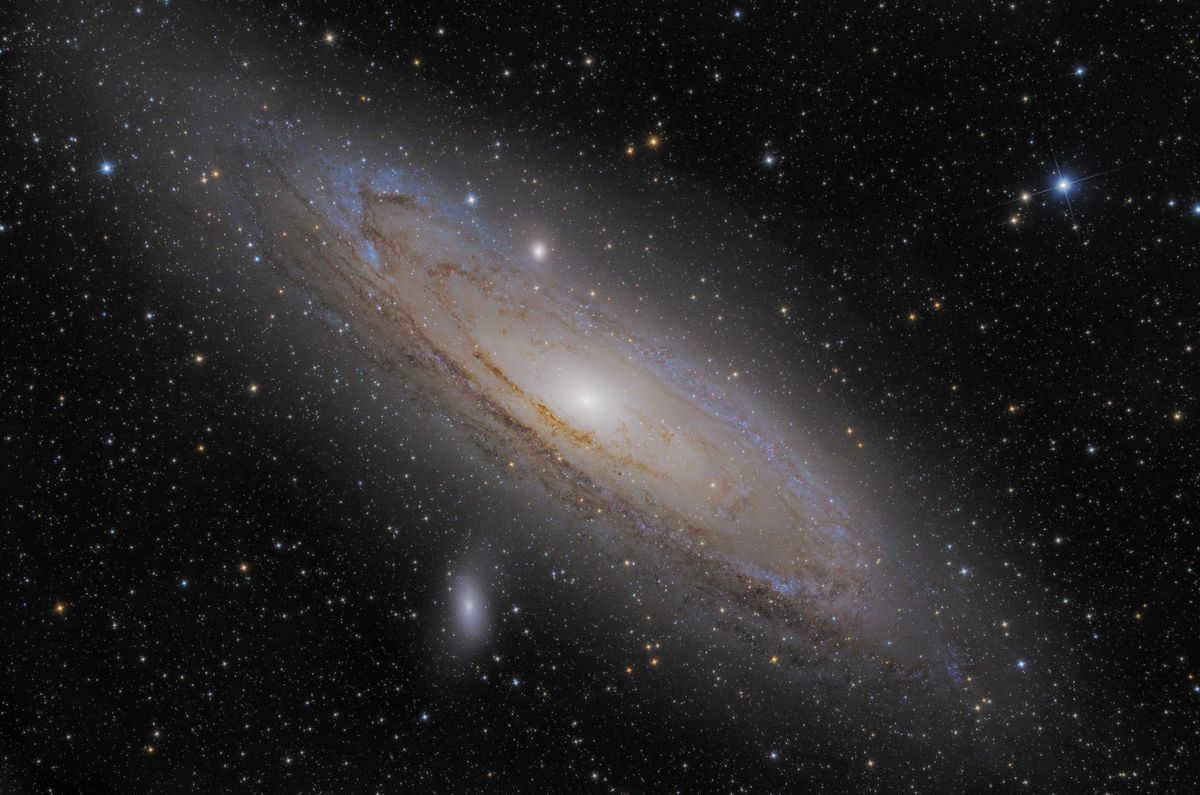
Andromeda Galaxy (M31). Asi 071 equipment, Takahashi Epsilon 130 telescope, total exposure 5.4 hours. Photo: Richard Sweeney
And how does the Andromeda Nebula appear in the sky?
Andromeda Nebula in the sky
The appearance of M31 in the sky depends on where, when, and how you observe it. Several factors greatly influence the visibility of the nebula:
- Sky light. Urban areas have always been illuminated, with bright street lights obscuring faint stars, nebulae, and even the Milky Way from city residents. Additionally, smog often lingers over major cities, scattering the light from street lamps and transforming a clear sky into a hazy one.
- The elevation of the Andromeda Nebula above the horizon. During sunrise and sunset, it becomes challenging to observe the galaxy due to significant atmospheric absorption of light directly above the horizon. The ideal conditions for observing the galaxy occur during August and September nights, as well as evenings in October, November, and December, when the galaxy is positioned high in the sky.
- The overall condition of the sky. Even when outside the city, away from street lights, the sky may not be favorable. The crucial factor is not the tranquility of the atmosphere but rather its transparency. The greater the transparency and clarity of the sky above, the better your ability to spot faint objects within it.
Imagine you are in a rural area, or at least on the outskirts of a bustling city, and the sky overhead is relatively dark and unobstructed. There are a couple of approaches to locating the Andromeda galaxy in the nighttime sky.
Locating the Andromeda Nebula in the sky. Approach #1.
In the initial approach, your starting point is a prominent group of stars known as the Pegasus square.
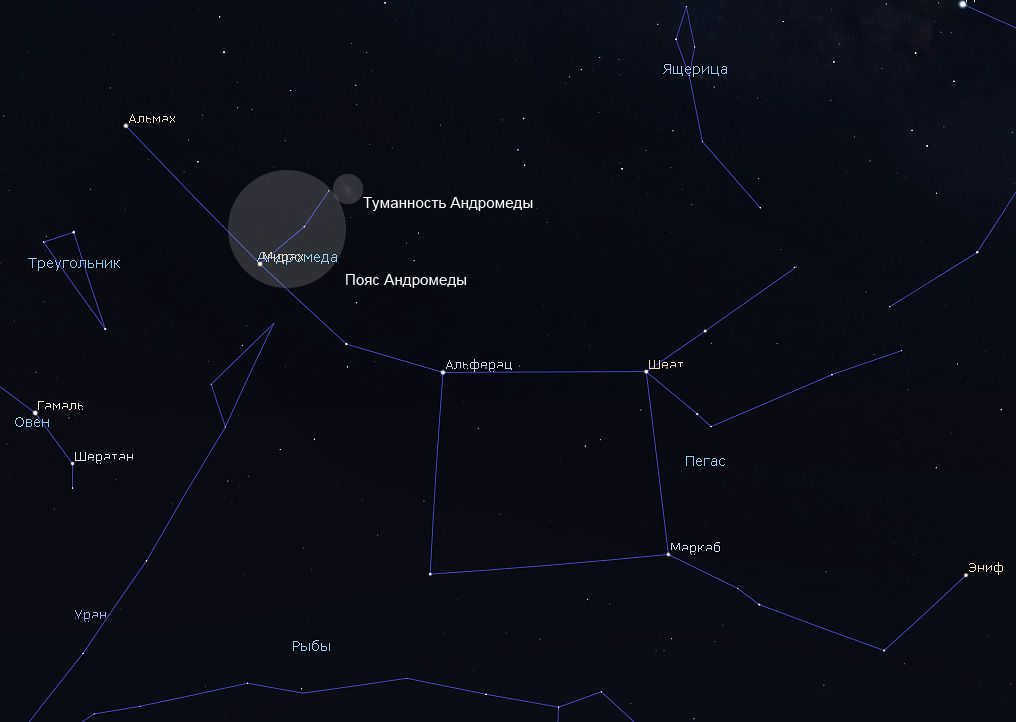

The vast square of Pegasus and the neighboring constellation Andromeda can be quite challenging to spot on autumn nights. However, it will certainly catch your attention if you face south and direct your gaze upwards. The stars that form the square do not possess remarkable brightness – they shine with a luminosity similar to the stars of the renowned Big Dipper. Nevertheless, due to the surrounding stars also being relatively dim, the square truly dominates the celestial view during the latter part of autumn.
Once you have located the square of Pegasus in the night sky, it becomes quite effortless to locate all the primary stars that form the distinctive shape of Andromeda. It is important to note that the fundamental arrangement of this constellation consists of a sequence of stars that runs eastward from the upper left corner of the Pegasus square, creating a resemblance to a colossal smoking pipe and its mouthpiece.
During the evenings of November, Andromeda can be observed at a significant altitude in the celestial sphere.
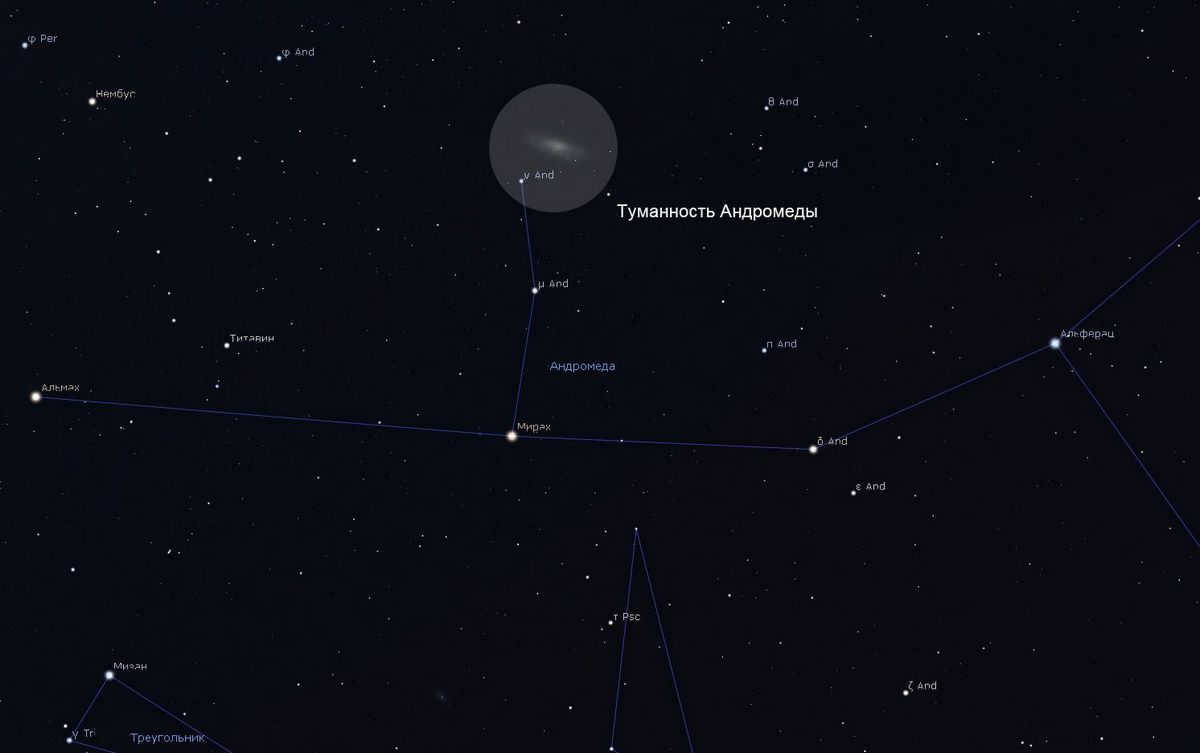
The Andromeda Nebula is located directly above the star ν Andromeda. Figure: Stellarium
How to locate the Andromeda Nebula in the sky. Method #2
We can find the Andromeda Nebula not by starting from the square of Pegasus, but by starting from the constellation Cassiopeia, which is almost at its highest point on fall evenings.
The constellation Cassiopeia is very easy to spot because it forms a distinct letter W (or М or M, depending on your preference) in the sky. To locate Cassiopeia in the fall, simply go outside and look up.
Have you found the constellation? Now notice that the right half of the celestial letter W is more pointed than the left half. This sharper half of the constellation is the indicator pointing towards the Andromeda Galaxy.
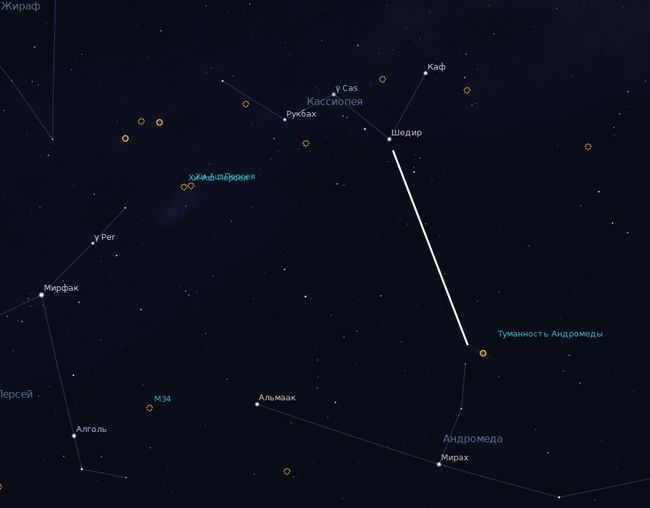
To locate the Andromeda galaxy in the night sky, you can use the right, sharper half of the letter W as a celestial arrow. This arrow will point you towards the Andromeda Nebula. You can refer to the image above for visual guidance.
The distance between the arrowhead and the nebula is approximately four times the distance between the neighboring stars that form the letter W of Cassiopeia.
What to do if you can’t see the Andromeda Nebula?
If you are unable to see the Andromeda Nebula with the naked eye, there are a couple of things you can try. One option is to use binoculars or a telescope to aid in your search.
Using binoculars can be helpful because they provide a larger field of view, making it easier to locate the galaxy. To begin your search, start from the star Mirach, which is also known as Andromeda’s beta. From there, guide your binoculars towards Andromeda’s mu and nu stars. In a city sky, the nebula will appear as a faint spot just above and to the right of nu Andromeda. Take your time and carefully survey this area of the sky. It’s important to note that the smooth, soft glow of the galaxy will be more noticeable when observing from outside the city.
When using the telescope, it is recommended to start the search from the star Mirach and move through the mu and nu of Andromeda. To increase the field of view, it is advisable to use the lowest magnification possible. In the case of observing galaxies and faint nebulae, high magnifications are not necessary as they can reduce contrast. Newton telescope owners should be aware that their telescopes produce an inverted image. However, those with Go To telescopes can simply enter the name of the nebula into the computer and the telescope will automatically point to it.
The constellation Andromeda is easily visible in the northern hemisphere of Earth and consists of only three bright stars arranged in a line. It is home to the famous M 31 galaxy, also known as the “Andromeda Nebula”, which can even be seen with the naked eye in the sky.
Although not the largest constellation in the sky, Andromeda offers a plethora of fascinating objects that can be observed with the naked eye, binoculars, or a telescope.
Exploring the Andromeda Constellation
Andromeda is most prominently visible during the spring and fall seasons, with its best viewing opportunities occurring in the fall. This celestial formation is classified as a fall constellation. In May, it begins to rise above the northeastern horizon, and by June, it reaches a height that allows for a full view. In the southern hemisphere, Andromeda can be seen as far as latitude -40 degrees.
Locating the Andromeda constellation is relatively simple. It can be found below the well-known W shape of the Cassiopeia constellation. By looking below Cassiopeia and towards the right, observers can spot the Great Square of Pegasus, which consists of four stars forming an evenly shaped square.

The constellation Andromeda can be observed in the night sky. It is well-known among astronomers and can be found using the Stellarium Planetarium.
In the upper left corner of this celestial square, you will find the star Alpheratz, which is considered the alpha star of Andromeda. It is also known as Sirrah. To the left of Alpheratz, there is a row of three stars that have similar brightness. These stars are part of the Andromeda constellation. Just above the middle star, you may notice a faint glow. This is the famous Andromeda Nebula, which is actually a massive galaxy called M31.
Another neighboring constellation to Andromeda is Perseus. Perseus can be found below Cassiopeia and to the left of Andromeda. The alpha star of Perseus, known as Mirfak, aligns almost perfectly with the stars of Andromeda.
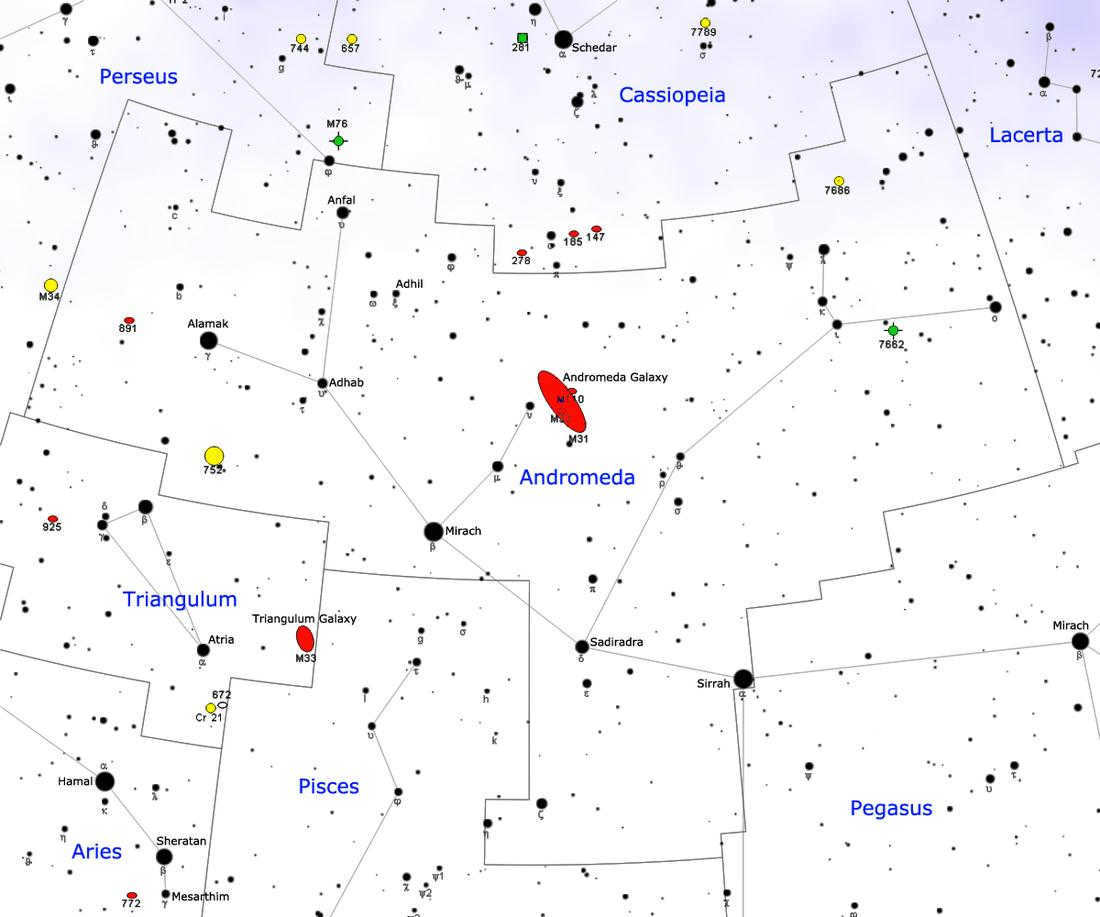
Andromeda constellation map.
What is the appearance of the Andromeda constellation in the night sky? There is not much to note about it – a line of prominent stars starting from the Pegasus Square. However, it is still worth paying attention to, as it houses numerous intriguing celestial objects.
The Andromeda constellation has the complete Latin name Andromeda, and the abbreviation And. It spans across an area of 722 square degrees and contains 100 stars that shine brighter than a magnitude of 6.
Exciting attractions in the Andromeda constellation
In addition to the M 31 galaxy, the Andromeda constellation offers a plethora of fascinating objects. When observing through a telescope, one can discover numerous other galaxies and exquisite double stars. Furthermore, there are various types of variable stars that can be spotted with the naked eye or binoculars. Additionally, one can find planetary nebulae, star clusters, and nebulae within this constellation.
Stars in the Andromeda Constellation
The Andromeda constellation contains a number of interesting double and variable stars. Let’s explore some of the most notable ones.
The Star Alferatz
Alpheratz, also known as Sirrah, is the brightest star in the Andromeda constellation and serves as its alpha. Originally, it was considered part of the Pegasus constellation and was designated as its delta. Its Arabic name translates to “the navel of the horse”. For a long time, Alferatz was associated with both Pegasus and Andromeda. It wasn’t until 1928 that this star was officially assigned to Andromeda, and Pegasus no longer has a star with the delta designation.
Alpheratz has a relatively stable brightness level, ranging from 2.02 to 2.06 magnitude. It is located approximately 97 light years away from Earth.
The most fascinating aspect is that Alpheratz A is an uncommon mercury-manganese star. In this star’s atmosphere, there is an abundance of manganese, mercury, gallium, and europium, while other elements are scarce. Mercury clouds hover above the surface, distributed unevenly, resulting in slight fluctuations in brightness.
The second component, Alpheratz B, is slightly smaller. This star has a mass equivalent to 2 times that of the Sun and is 1.6 times larger in size. It has a surface temperature of 8500 K and emits 13 times more light than the Sun. Additionally, this star is relatively young, with an age of 70 million years.
This system is a physical double, with both stars completing a revolution around their center of gravity in 96.7 days. However, when observed through a telescope, these stars appear too close together to be distinguished.
The Alamac Star
This celestial object is known as γ Andromeda and stands out for being a triple system, even though only two components are visible through a telescope. However, Alamac is particularly captivating as it features two stars with distinct colors – one orange and the other blue. It is situated at an astonishing distance of 350 light-years away.
When observed through a telescope, Alamac appears as a double star.
The main star, which has a yellow-orange hue, has a brightness of 2.1m. Close to it, you can spot a blue companion with a brightness of 4.84m. These two stars are separated by an angular distance of 9.6”. Interestingly, the blue star is actually a double star itself, consisting of a pair of stars that are only 0.5” apart. Unfortunately, amateur telescopes are unable to distinguish between these two stars. As a side note, the orange star is 80 times larger than our Sun and 9 times more massive.
Not just that, the blue pair also consists of a double star in terms of its spectral composition. However, this pair is in close proximity to each other, with an orbital period of merely 2.67 days.
Therefore, Alamak is not a singular double star, but rather a multiple star system, even though it appears as a double when observed through a telescope, and is truly stunning. Whenever you gaze upon it, keep in mind that the blue star itself is a intricate arrangement of three stars.
The variable star R Andromeda
R Andromeda is a member of the myrids, a class of variable stars known as Myra Kita (Omicron Kita) variables. This particular star is a giant that is nearly 500 times larger than the Sun. However, unlike other stars of its kind, R Andromeda pulsates, causing its radius and temperature to fluctuate.
Unlike its hot counterparts, this cold red giant has already exhausted its hydrogen fuel and is now burning helium in its core and remnants of hydrogen in its outer layers. As a result, elements such as carbon and zircon are being brought to the surface of the star.
What sets R Andromeda apart is the magnitude of its luminosity. It can reach a maximum brightness of 5.8 m, making it easily visible with any binoculars. However, during its minimum phase, its brightness decreases to 15.2 m, making it challenging to observe even with highly advanced amateur telescopes. The difference between its maximum and minimum brightness is nearly 10 m, and it completes one full cycle in 409 days. Additionally, it’s worth noting that the minimum and maximum values do not always reach their expected limits, often falling short by several magnitudes.
The Andromeda’s υ star
Ypsilon Andromeda is a star similar to the Sun, but slightly larger and hotter. It is not particularly notable on its own, but it stands out for being the first star of its kind to have a planetary system. Currently, there have been 4 gas giant planets discovered orbiting around it. Interestingly, these planets have orbits that are not aligned in the same plane as the planets in our solar system.
What makes this star even more unique is the presence of a faint red dwarf located at a distance of 750 astronomical units from the main star. If there are any Earth-like planets in this system, it could be an incredibly intriguing world to study.
There are numerous galaxies within the Andromeda constellation, including the most luminous galaxy in the sky, M 31, also known as the renowned Andromeda Nebula. The remaining galaxies are considerably fainter and more challenging to observe, necessitating the use of a relatively powerful telescope.
M 31, the Andromeda Nebula
In the 10th century, the Arab astronomer As-Sufi documented the presence of a small cloud near the star ν Andromeda, visible on a dark night. It was not until the 17th century that Europeans took notice of it. In 1612, astronomer Simon Marius directed a telescope towards this cloud and noted that its brightness increases towards the center, resembling a candle flame when viewed through a transparent horn plate.
Edmond Halley, a student of Newton, observed this nebula and concluded that it is “light emanating from an incomprehensible expanse, located in the realms of the ether and filled with a substance that spills and radiates light.” Astronomer Derham went even further, suggesting that it is a delicate opening in the celestial sphere, allowing the light from the heavenly realm to shine through.
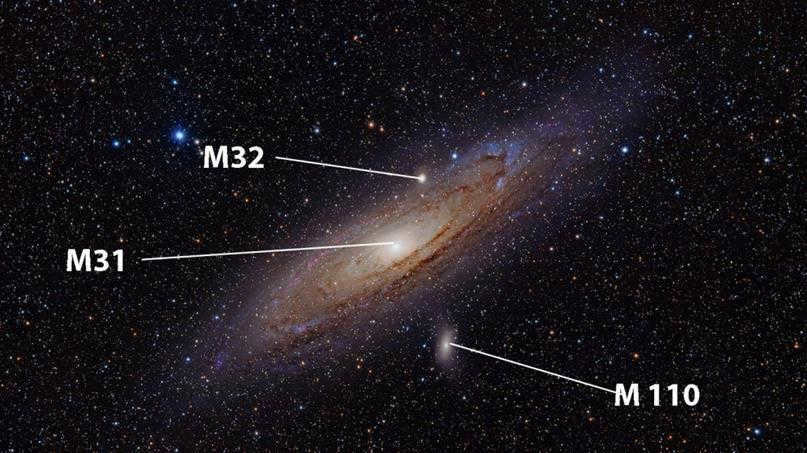
Andromeda Galaxy’s primary satellite galaxies.
During the 19th century, there was a lack of understanding regarding the nature of the peculiar Andromeda Nebula. There was a scientific debate about whether it was located within our solar system or further away, and whether it comprised of gas or stars. It wasn’t until 1924 when Edwin Hubble captured images of this nebula using a 2.5-meter reflector and observed individual stars. This discovery revealed that it was an enormous stellar system containing billions of stars, essentially a massive galaxy.
Following this, determining the distance to M 31 became a matter of technique, leading to the emergence of extragalactic astronomy. Hence, the significance of this nebula in the realm of stellar science cannot be overstated. It is likely that there is no other galaxy as convenient to study and from which a plethora of information has been amassed. While it is challenging for astronomers to examine our own galaxy from within, they are able to closely investigate the neighboring galaxy, M 31, which is almost identical.
The Andromeda Spiral Galaxy is of colossal proportions, housing a trillion stars – several times larger than our very own Milky Way. Nestled within its core lies a supermassive black hole with a staggering mass of 140 million solar masses.
This galaxy has a magnitude of 3.4 and covers an area seven times larger than the full Moon in the sky. It is not visible due to its low surface brightness. Even when observed through a telescope, it appears as a fuzzy cloud, with the central part being brighter and the edges being indiscernible due to their brightness being spread out over a larger area.
The M 31 galaxy has several satellite galaxies, including the elliptical galaxies M 110 and M 32. M 110 is clearly visible and separated from M 31, while M 32 is hidden behind it and appears to be blended in, making it more difficult to locate.
The Andromeda Galaxy is moving towards our galaxy and will eventually collide in approximately 4.5 billion years. This gravitational interaction will cause significant changes to both galaxies, leading to their eventual merger into a single entity. The orbits of stars will be altered, and existing planetary systems will be affected due to the increased density of stars in space. Some stars will be expelled from their original paths, while others will form new partnerships, resulting in numerous cataclysmic events. However, it is important to note that this process will occur over millions of years, which is relatively brief on a cosmic timescale.
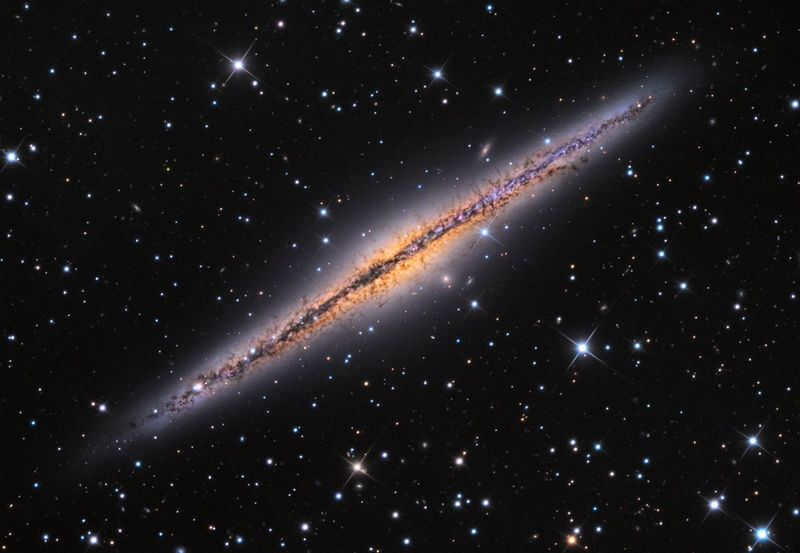
The constellation Andromeda is home to the stunning Galaxy NGC 891.
This spiral galaxy, with a brightness of 10.1 m, can be observed from the edge. While it is visible through an amateur telescope, a larger aperture and astrophotography expertise are required to truly appreciate its intricate details.
Behold the Galaxy NGC 7640
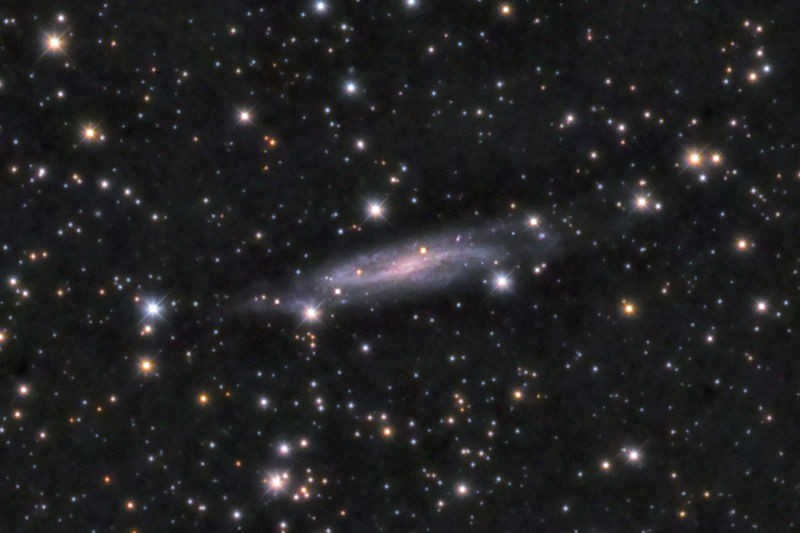
There is another spiral galaxy in space that possesses a magnitude of 10.9 m. To observe it, one needs a telescope with a large aperture, which not everyone owns. However, those fortunate enough will have the opportunity to witness a remarkably tilted spiral galaxy.
Dispersed star group NGC 752 (C 28)
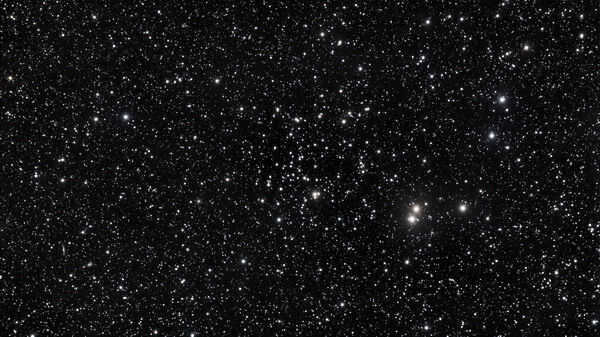
The NGC 752 cluster is a group of stars in space.
With an estimated age of one billion years, it is considered an old cluster. Within the cluster, there are multiple very hot stars that belong to the spectral class A2.
On the celestial sphere, the NGC 752 cluster has a brightness magnitude of 5.7 m. It is made up of approximately 60 stars with magnitudes ranging from 9 to 12 m. The cluster has an angular size of 75'.
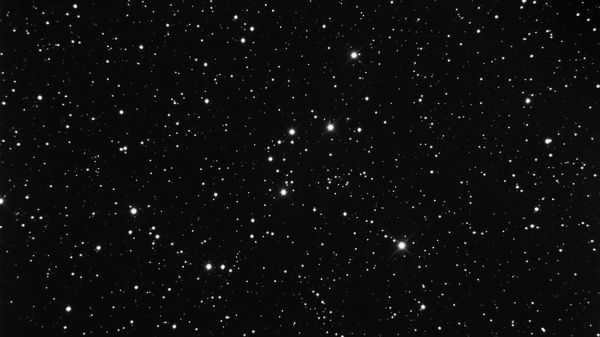
NGC 956 is a scattering cluster.
This cluster, located in the Andromeda constellation, is relatively small, consisting of approximately 30 stars ranging in brightness from 10 to 14 magnitudes. To observe it, a telescope with an aperture of at least 150-200 mm is required. With a smaller telescope, it will be less visible. The overall brightness of the cluster is 9 magnitudes, and it has an angular size of approximately 8′.
The NGC 7686 is a dispersed group of stars
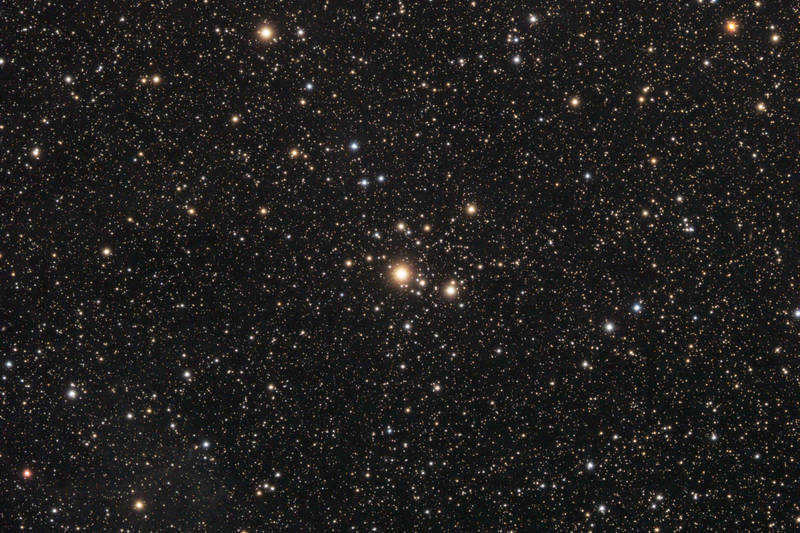
The NGC 7686 cluster is dispersed in space.
This particular cluster exhibits a much greater luminosity compared to its predecessor, measuring at 5.6 m. Additionally, it is twice the size, spanning 15′. As a result, it can be easily observed using a small telescope. However, it is quite uncommon to stumble upon it on the first attempt.
NGC 7662 – The Enchanting “Blue Snowball” Planetary Nebula
Situated in the Andromeda constellation, a mesmerizing planetary nebula captivates the gaze. This celestial wonder is officially known as NGC 7662 or C 22, but is affectionately referred to as the “Blue Snowball”. Its ethereal appearance truly resembles a pristine blue snowball, as depicted in stunning photographs.
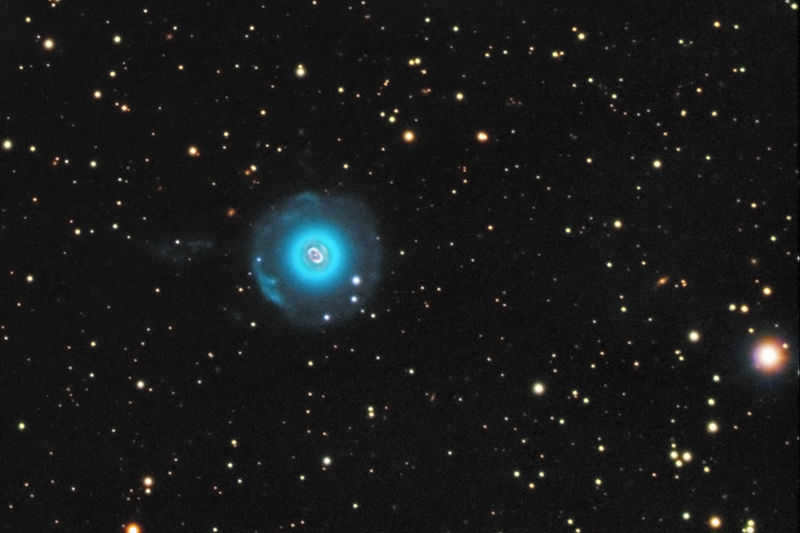
NGC 7662, also known as the Blue Snowball, is a planetary nebula that remains shrouded in mystery. Its true distance and size have yet to be determined. At the heart of this celestial cloud of gas lies a scorching blue dwarf star, which undergoes fluctuations in brightness, ranging from 12 to 14 magnitude. With a surface temperature that soars to an impressive 75,000 K, this star ranks among the hottest in existence.
The nebula itself boasts a magnitude of 8.3, making it visible through a small amateur telescope. However, its nebulous nature presents a challenge for observation. When viewed through a 200mm telescope, the nebula transforms into a striking blue-green disk, captivating the viewer’s gaze. Despite its allure, the nebula measures a mere 0.62″ in angular size, rendering its search a formidable task. Optimal conditions with clear skies are highly recommended for a successful sighting.
The legend of the Andromeda constellation


